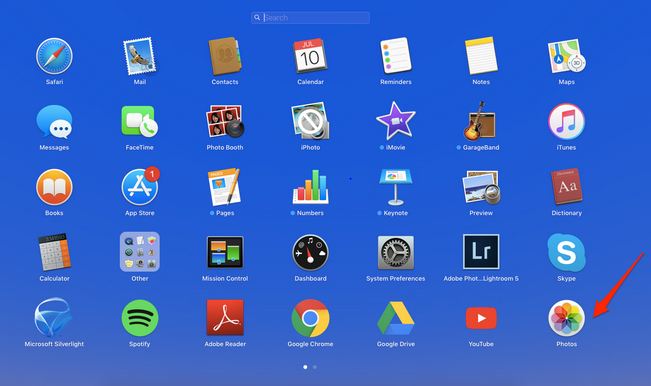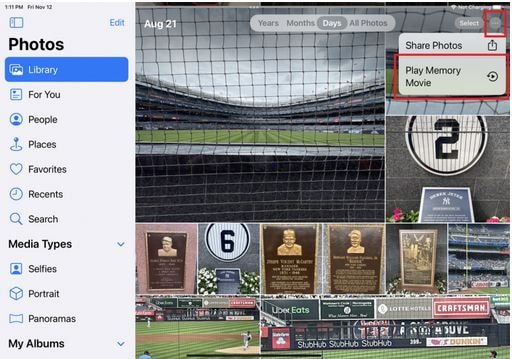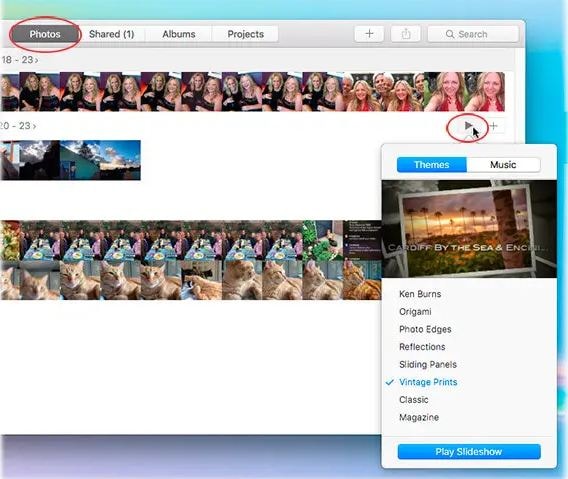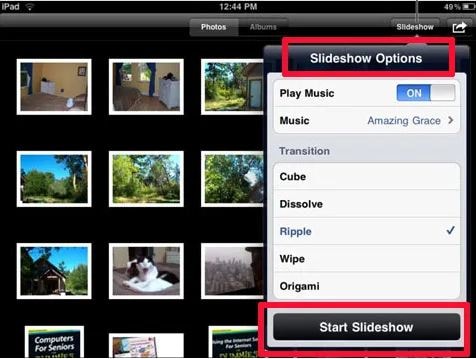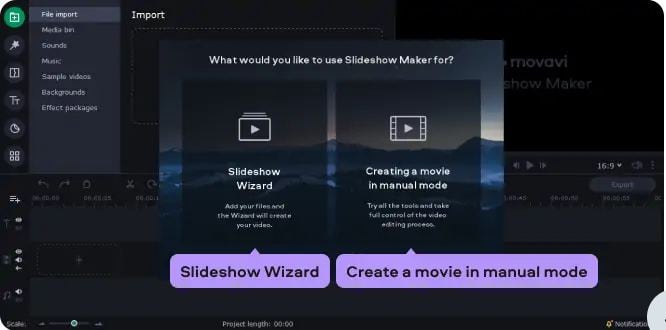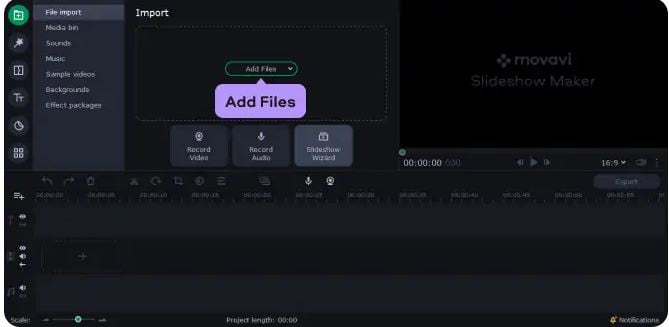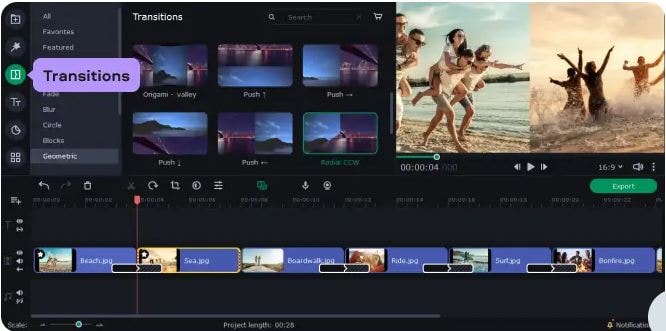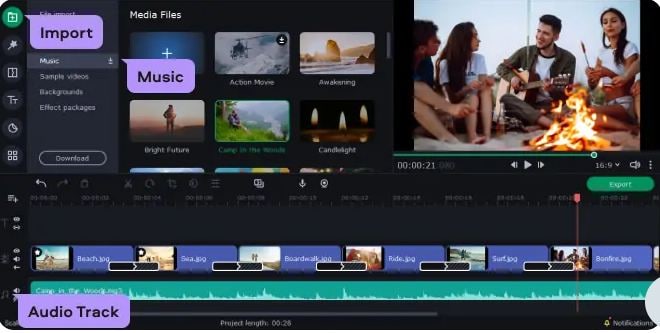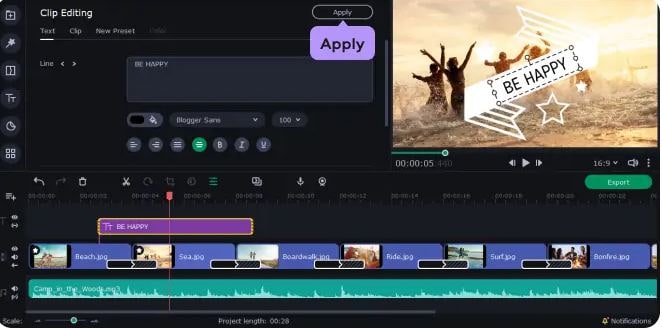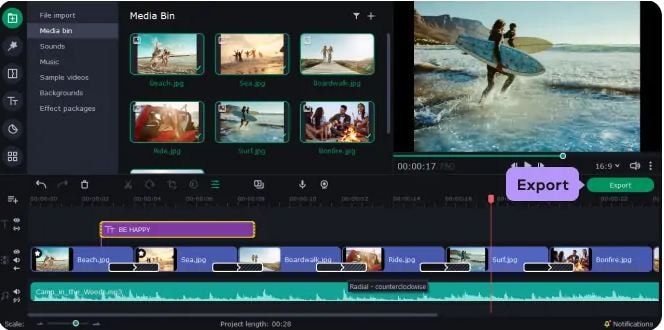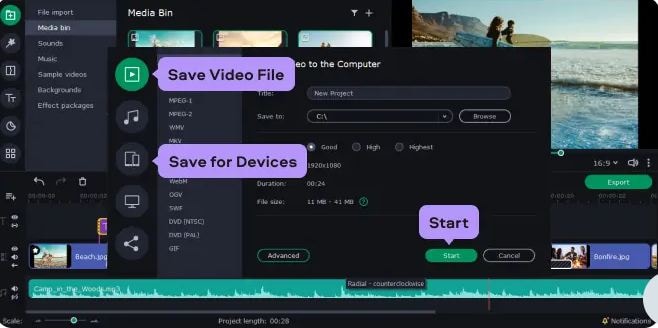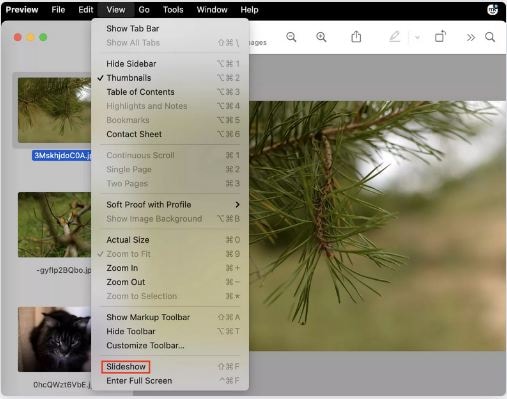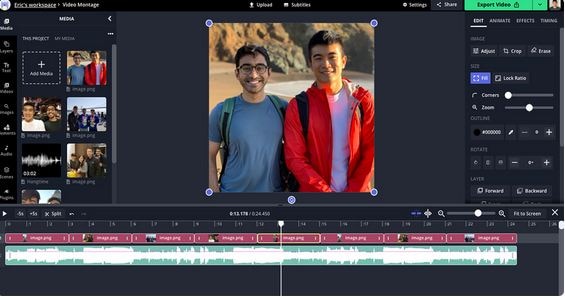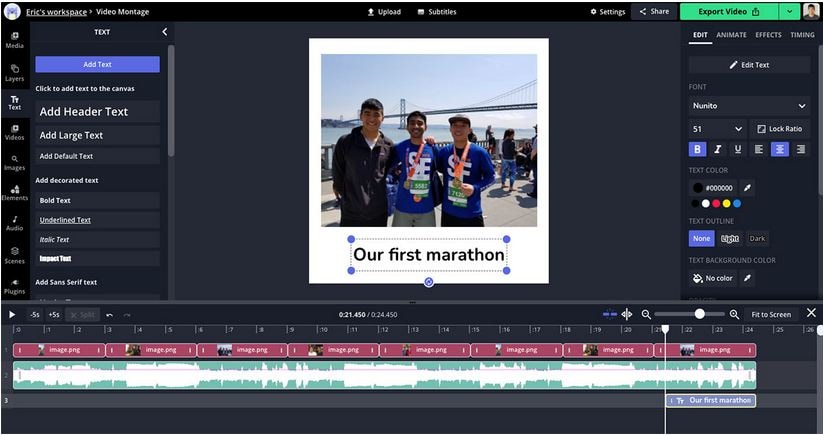:max_bytes(150000):strip_icc():format(webp)/audio-books-56a324b93df78cf7727c00f5.jpg)
3 Effective Methods to Correct Color Distortion in Videos

3 Effective Methods to Correct Color Distortion in Videos
Create High-Quality Video - Wondershare Filmora
An easy and powerful YouTube video editor
Numerous video and audio effects to choose from
Detailed tutorials are provided by the official channel
Nothing is more satisfying than seeing the final cut of a video and realizing that everything we filmed is crystal clear, with vibrant colors and balanced light. Unfortunately, whether you are editing on your own or collaborating with a team, this can be difficult to achieve because color problems often occur. Unlike photo editors, where one photo can easily be fixed without affecting the rest of an album, video editing requires adjusting to fix one problem. We’ll look at three different methods to correct color distortion in videos.
In this article
02 How will Color Distortion Affect Your Videos?
03 Different Methods to Correct Color Distortion in Videos
What Is Color Distortion
Color distortion, also called chromatic aberration (CA), happens when the camera’s lens cannot resolve the wavelengths of light that it is recording. It occurs due to dispersion, which is when the lens elements’ refractive index varies with the light wavelength.
The refractive index of transparent materials often reduces with increasing wavelength. Because a lens’ focal length depends on the index of refraction, this variation in refraction index affects focusing.
There are two types of CA: transverse (lateral) and axial (longitudinal). Axial aberration happens when different wavelengths of light focus at different distances from a lens (focus shift). Essentially, longitudinal aberration is often at long focal lengths.
On the other hand, transverse aberration happens when different wavelengths focus at different places in the focal plane due to the magnification or distortion of the lens varying with wavelength. Ideally, transverse aberration is often at short focal lengths.
The two types of CA have different characteristics, and they may occur together. Axial chromatic aberration occurs throughout an image, and you can reduce it by stopping down, hence increasing the depth of the field so that although the different wavelengths are focusing at different distances, they’re still in acceptable focus.
When it comes to transverse chromatic aberration, it doesn’t occur in the middle of the image, and it increases towards the edge. What’s more? Stopping down does not affect it.
How will Color Distortion Affect Your Videos?
Colour distortion displays itself as “fringes” of color on the boundaries separating bright and dark parts of the image in a video. Color distortion can also occur when adding effects to a video, such as the use of a green screen. By using the green screen to replace the real thing, the colors in the video can appear a little off.
Different Methods to Correct Color Distortion in Videos
There are several methods to correct color distortion in your video. They include.
Method 1: Correct Color Distortion in Videos Using Filmora
Filmora is user-friendly software with powerful tools that allow users to tweak the color settings and correct color distortion. Follow the steps below to learn how to correct color distortion in videos using Filmora.
Step 1. Download and Install Filmora
Head to https://filmora.wondershare.net/ and download Filmora. Once you have finished downloading the software, install Filmora on your device and launch it.
Step 2. Import Your videos to Filmora
Select the New Project option to create a new project file. Click on the Import Media Files Here to find and load your videos to the Filmora’s media library. Alternatively, you can drag and drop your video file to the media library, and then put it on the timeline.
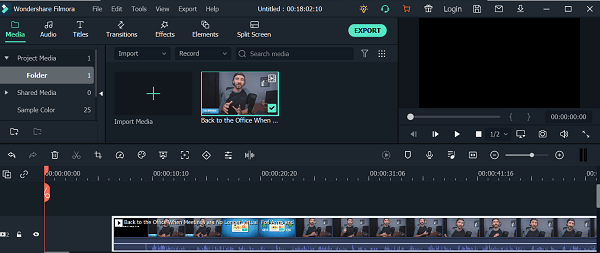
Step 3. Correct Color Distortions with Your Preferences
Navigate to the timeline and double-click your video. You’ll see the video editing window. Select the Color panel; you’ll see several parameters that you can tweak.
- Contrast allows you to control the difference in brightness and color in different areas of your video image. The Brightness setting lets you customize the overall darkness or lightness of the video image.
- With the Saturation setting, you can make the colors in your video image appear more inconspicuous or saturated.
- If the color in your video image is set too high, it will look oversaturated. The colors will be washed out and muted if it’s set to low. The Tint control in Filmora allows you to adjust the balance between these two chroma channels.
- Additionally, you can employ Hollywood film-looking color sets for videos from Sparta 300, Walking Dead, Game of Thrones, Star Wars, and much more.
- Preview and Save Your Edited Video
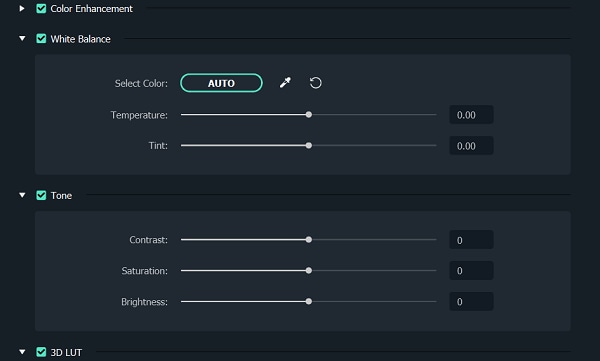
Once you have finished correcting the color distortion in your video, you can hit the Play symbol to view the changes in the previewing window. Click the Export button if you are content with the results. You can click on Settings to change the settings if you want.
Filmora allows you to save your videos in different formats. To do this, navigate to the Format tab. The software has the option of uploading videos directly to Vimeo or YouTube. Alternatively, you can burn it to DVD or export it to a portable device.
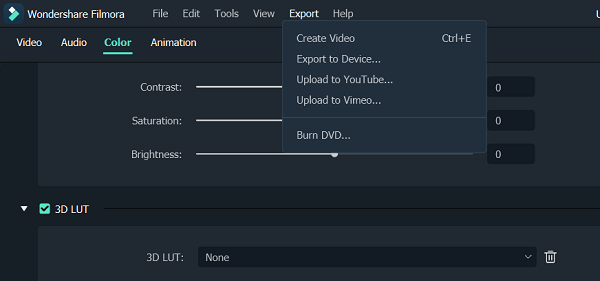
For Win 7 or later (64-bit)
For macOS 10.12 or later
Method 2: Correct Color Distortion in Videos Using Premiere Pro
Premiere Pro provides color correction tools that allow users to edit footage directly on their timeline. To learn how to correct color distortion in video using Premiere Pro, follow these steps:
Step 1. Import Your Video Files
Use the Import command to bring video files on your device into your project; this will make the video files available to the Premiere Pro project. This timeline-based video editing software application allows you to import an entire folder, multiple files, or a single file. You can import video files using the Import command or the Media Browser.
Step 2. Head to Color Correction Effect
Once you have imported your video, place it on the timeline. Apply color correction effects to the video you placed in the Timeline. You can also select your video and drag and drop the effect you want to the Video Effects selection under the Effects Control Panel. Here are some of the color correction effects you can apply:
Brightness and Contrast Effect: With this effect, you can adjust the contrast and brightness of your video. Using this effect allows you to make adjustments to all pixel values in your video image at once — mid-tones, shadows, and highlights.
Color Balance Effect: This effect changes the amount of blue, green, and red in the shadow, highlights of an image, and mid-tones. Preserve Luminosity preserves the average brightness of your video image and changes the color. It maintains the tonal balance in your video image.
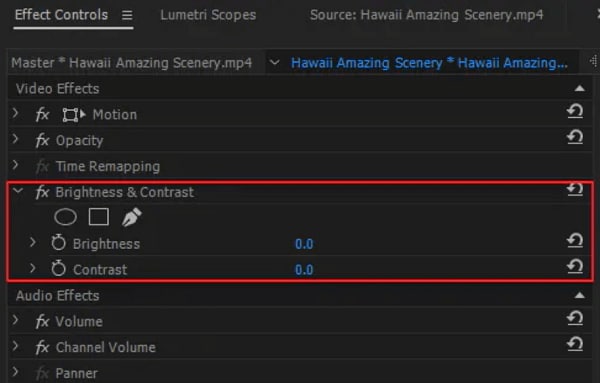
Method 3: Correct Color Distortion in Videos Using Final Cut Pro
Developed by Macromedia and later Apple, Final Cut Pro is a non-linear video editing software that allows you to log and transfer videos onto a hard drive, where you can edit them, process them, and output the videos to various formats.
The software provides non-destructive and non-linear editing of QuickTime-compatible video formats. These include 8K, 5K, 4K, 2K, XDCAM (via plug-in), P2 MXF (DVCProHD), HDV, and DV film formats. Final Cut Pro can also import projects from iMovie for iPadOS and iOS. It also comes with multiple color correction tools, such as color wheels, video scopes, and sliders and curves.
With that in mind, let’s look at how to correct color distortion in videos using Final Cut Pro.
Step 1. Open Your Video in Final Cut Pro
Click on the ‘Window’ tab at the top of your screen and select the video you’d like to edit from the drop-down menu.
Step 2. Switch to Color Effects Work Space

Go to the Window panel and select the Workspaces option. Then, choose the Color & Effects option. Here, you can adjust a range of scopes, including the Luma Waveform, Vectorscope, and RGB Overlay.

Step 3. Correct the Color
Head to the color panel and click the drop-down menu next to No Corrections. Select Color Wheels, where you’ll be able to control various parts of your video clips individually.
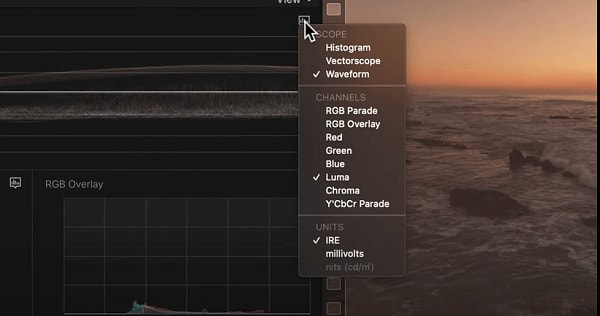
The Shadows wheel allows you to control the darker shades of your footage, Highlights controls the bright shades of your footage, and the Midtones wheel allows you to adjust the Luma channels in the middle of your video clip. The Master wheel allows you to adjust hue, saturation, and Luma channel (exposure).
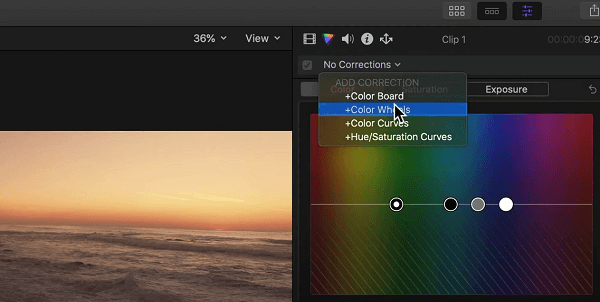
In addition to the color wheels, you’ll find more controls below that help you adjust the white balance.
Step 4. Save Your New Video File
After you’ve made these adjustments to your video, it’s time to save and export the file. Click on the ‘File’ tab at the top of your screen and choose ‘Export. Once you click ‘Export,’ you’ll be saving the file to your hard drive. Once it’s done, click ‘Save.’ The file will automatically be saved on your desktop.
Conclusion
● If you are experiencing color distortion, you can use any of the three methods above to correct it. Filmora is one of the most popular video edit tools that people use to correct color distortion videos.
Nothing is more satisfying than seeing the final cut of a video and realizing that everything we filmed is crystal clear, with vibrant colors and balanced light. Unfortunately, whether you are editing on your own or collaborating with a team, this can be difficult to achieve because color problems often occur. Unlike photo editors, where one photo can easily be fixed without affecting the rest of an album, video editing requires adjusting to fix one problem. We’ll look at three different methods to correct color distortion in videos.
In this article
02 How will Color Distortion Affect Your Videos?
03 Different Methods to Correct Color Distortion in Videos
What Is Color Distortion
Color distortion, also called chromatic aberration (CA), happens when the camera’s lens cannot resolve the wavelengths of light that it is recording. It occurs due to dispersion, which is when the lens elements’ refractive index varies with the light wavelength.
The refractive index of transparent materials often reduces with increasing wavelength. Because a lens’ focal length depends on the index of refraction, this variation in refraction index affects focusing.
There are two types of CA: transverse (lateral) and axial (longitudinal). Axial aberration happens when different wavelengths of light focus at different distances from a lens (focus shift). Essentially, longitudinal aberration is often at long focal lengths.
On the other hand, transverse aberration happens when different wavelengths focus at different places in the focal plane due to the magnification or distortion of the lens varying with wavelength. Ideally, transverse aberration is often at short focal lengths.
The two types of CA have different characteristics, and they may occur together. Axial chromatic aberration occurs throughout an image, and you can reduce it by stopping down, hence increasing the depth of the field so that although the different wavelengths are focusing at different distances, they’re still in acceptable focus.
When it comes to transverse chromatic aberration, it doesn’t occur in the middle of the image, and it increases towards the edge. What’s more? Stopping down does not affect it.
How will Color Distortion Affect Your Videos?
Colour distortion displays itself as “fringes” of color on the boundaries separating bright and dark parts of the image in a video. Color distortion can also occur when adding effects to a video, such as the use of a green screen. By using the green screen to replace the real thing, the colors in the video can appear a little off.
Different Methods to Correct Color Distortion in Videos
There are several methods to correct color distortion in your video. They include.
Method 1: Correct Color Distortion in Videos Using Filmora
Filmora is user-friendly software with powerful tools that allow users to tweak the color settings and correct color distortion. Follow the steps below to learn how to correct color distortion in videos using Filmora.
Step 1. Download and Install Filmora
Head to https://filmora.wondershare.net/ and download Filmora. Once you have finished downloading the software, install Filmora on your device and launch it.
Step 2. Import Your videos to Filmora
Select the New Project option to create a new project file. Click on the Import Media Files Here to find and load your videos to the Filmora’s media library. Alternatively, you can drag and drop your video file to the media library, and then put it on the timeline.

Step 3. Correct Color Distortions with Your Preferences
Navigate to the timeline and double-click your video. You’ll see the video editing window. Select the Color panel; you’ll see several parameters that you can tweak.
- Contrast allows you to control the difference in brightness and color in different areas of your video image. The Brightness setting lets you customize the overall darkness or lightness of the video image.
- With the Saturation setting, you can make the colors in your video image appear more inconspicuous or saturated.
- If the color in your video image is set too high, it will look oversaturated. The colors will be washed out and muted if it’s set to low. The Tint control in Filmora allows you to adjust the balance between these two chroma channels.
- Additionally, you can employ Hollywood film-looking color sets for videos from Sparta 300, Walking Dead, Game of Thrones, Star Wars, and much more.
- Preview and Save Your Edited Video

Once you have finished correcting the color distortion in your video, you can hit the Play symbol to view the changes in the previewing window. Click the Export button if you are content with the results. You can click on Settings to change the settings if you want.
Filmora allows you to save your videos in different formats. To do this, navigate to the Format tab. The software has the option of uploading videos directly to Vimeo or YouTube. Alternatively, you can burn it to DVD or export it to a portable device.

For Win 7 or later (64-bit)
For macOS 10.12 or later
Method 2: Correct Color Distortion in Videos Using Premiere Pro
Premiere Pro provides color correction tools that allow users to edit footage directly on their timeline. To learn how to correct color distortion in video using Premiere Pro, follow these steps:
Step 1. Import Your Video Files
Use the Import command to bring video files on your device into your project; this will make the video files available to the Premiere Pro project. This timeline-based video editing software application allows you to import an entire folder, multiple files, or a single file. You can import video files using the Import command or the Media Browser.
Step 2. Head to Color Correction Effect
Once you have imported your video, place it on the timeline. Apply color correction effects to the video you placed in the Timeline. You can also select your video and drag and drop the effect you want to the Video Effects selection under the Effects Control Panel. Here are some of the color correction effects you can apply:
Brightness and Contrast Effect: With this effect, you can adjust the contrast and brightness of your video. Using this effect allows you to make adjustments to all pixel values in your video image at once — mid-tones, shadows, and highlights.
Color Balance Effect: This effect changes the amount of blue, green, and red in the shadow, highlights of an image, and mid-tones. Preserve Luminosity preserves the average brightness of your video image and changes the color. It maintains the tonal balance in your video image.

Method 3: Correct Color Distortion in Videos Using Final Cut Pro
Developed by Macromedia and later Apple, Final Cut Pro is a non-linear video editing software that allows you to log and transfer videos onto a hard drive, where you can edit them, process them, and output the videos to various formats.
The software provides non-destructive and non-linear editing of QuickTime-compatible video formats. These include 8K, 5K, 4K, 2K, XDCAM (via plug-in), P2 MXF (DVCProHD), HDV, and DV film formats. Final Cut Pro can also import projects from iMovie for iPadOS and iOS. It also comes with multiple color correction tools, such as color wheels, video scopes, and sliders and curves.
With that in mind, let’s look at how to correct color distortion in videos using Final Cut Pro.
Step 1. Open Your Video in Final Cut Pro
Click on the ‘Window’ tab at the top of your screen and select the video you’d like to edit from the drop-down menu.
Step 2. Switch to Color Effects Work Space

Go to the Window panel and select the Workspaces option. Then, choose the Color & Effects option. Here, you can adjust a range of scopes, including the Luma Waveform, Vectorscope, and RGB Overlay.

Step 3. Correct the Color
Head to the color panel and click the drop-down menu next to No Corrections. Select Color Wheels, where you’ll be able to control various parts of your video clips individually.

The Shadows wheel allows you to control the darker shades of your footage, Highlights controls the bright shades of your footage, and the Midtones wheel allows you to adjust the Luma channels in the middle of your video clip. The Master wheel allows you to adjust hue, saturation, and Luma channel (exposure).

In addition to the color wheels, you’ll find more controls below that help you adjust the white balance.
Step 4. Save Your New Video File
After you’ve made these adjustments to your video, it’s time to save and export the file. Click on the ‘File’ tab at the top of your screen and choose ‘Export. Once you click ‘Export,’ you’ll be saving the file to your hard drive. Once it’s done, click ‘Save.’ The file will automatically be saved on your desktop.
Conclusion
● If you are experiencing color distortion, you can use any of the three methods above to correct it. Filmora is one of the most popular video edit tools that people use to correct color distortion videos.
Nothing is more satisfying than seeing the final cut of a video and realizing that everything we filmed is crystal clear, with vibrant colors and balanced light. Unfortunately, whether you are editing on your own or collaborating with a team, this can be difficult to achieve because color problems often occur. Unlike photo editors, where one photo can easily be fixed without affecting the rest of an album, video editing requires adjusting to fix one problem. We’ll look at three different methods to correct color distortion in videos.
In this article
02 How will Color Distortion Affect Your Videos?
03 Different Methods to Correct Color Distortion in Videos
What Is Color Distortion
Color distortion, also called chromatic aberration (CA), happens when the camera’s lens cannot resolve the wavelengths of light that it is recording. It occurs due to dispersion, which is when the lens elements’ refractive index varies with the light wavelength.
The refractive index of transparent materials often reduces with increasing wavelength. Because a lens’ focal length depends on the index of refraction, this variation in refraction index affects focusing.
There are two types of CA: transverse (lateral) and axial (longitudinal). Axial aberration happens when different wavelengths of light focus at different distances from a lens (focus shift). Essentially, longitudinal aberration is often at long focal lengths.
On the other hand, transverse aberration happens when different wavelengths focus at different places in the focal plane due to the magnification or distortion of the lens varying with wavelength. Ideally, transverse aberration is often at short focal lengths.
The two types of CA have different characteristics, and they may occur together. Axial chromatic aberration occurs throughout an image, and you can reduce it by stopping down, hence increasing the depth of the field so that although the different wavelengths are focusing at different distances, they’re still in acceptable focus.
When it comes to transverse chromatic aberration, it doesn’t occur in the middle of the image, and it increases towards the edge. What’s more? Stopping down does not affect it.
How will Color Distortion Affect Your Videos?
Colour distortion displays itself as “fringes” of color on the boundaries separating bright and dark parts of the image in a video. Color distortion can also occur when adding effects to a video, such as the use of a green screen. By using the green screen to replace the real thing, the colors in the video can appear a little off.
Different Methods to Correct Color Distortion in Videos
There are several methods to correct color distortion in your video. They include.
Method 1: Correct Color Distortion in Videos Using Filmora
Filmora is user-friendly software with powerful tools that allow users to tweak the color settings and correct color distortion. Follow the steps below to learn how to correct color distortion in videos using Filmora.
Step 1. Download and Install Filmora
Head to https://filmora.wondershare.net/ and download Filmora. Once you have finished downloading the software, install Filmora on your device and launch it.
Step 2. Import Your videos to Filmora
Select the New Project option to create a new project file. Click on the Import Media Files Here to find and load your videos to the Filmora’s media library. Alternatively, you can drag and drop your video file to the media library, and then put it on the timeline.

Step 3. Correct Color Distortions with Your Preferences
Navigate to the timeline and double-click your video. You’ll see the video editing window. Select the Color panel; you’ll see several parameters that you can tweak.
- Contrast allows you to control the difference in brightness and color in different areas of your video image. The Brightness setting lets you customize the overall darkness or lightness of the video image.
- With the Saturation setting, you can make the colors in your video image appear more inconspicuous or saturated.
- If the color in your video image is set too high, it will look oversaturated. The colors will be washed out and muted if it’s set to low. The Tint control in Filmora allows you to adjust the balance between these two chroma channels.
- Additionally, you can employ Hollywood film-looking color sets for videos from Sparta 300, Walking Dead, Game of Thrones, Star Wars, and much more.
- Preview and Save Your Edited Video

Once you have finished correcting the color distortion in your video, you can hit the Play symbol to view the changes in the previewing window. Click the Export button if you are content with the results. You can click on Settings to change the settings if you want.
Filmora allows you to save your videos in different formats. To do this, navigate to the Format tab. The software has the option of uploading videos directly to Vimeo or YouTube. Alternatively, you can burn it to DVD or export it to a portable device.

For Win 7 or later (64-bit)
For macOS 10.12 or later
Method 2: Correct Color Distortion in Videos Using Premiere Pro
Premiere Pro provides color correction tools that allow users to edit footage directly on their timeline. To learn how to correct color distortion in video using Premiere Pro, follow these steps:
Step 1. Import Your Video Files
Use the Import command to bring video files on your device into your project; this will make the video files available to the Premiere Pro project. This timeline-based video editing software application allows you to import an entire folder, multiple files, or a single file. You can import video files using the Import command or the Media Browser.
Step 2. Head to Color Correction Effect
Once you have imported your video, place it on the timeline. Apply color correction effects to the video you placed in the Timeline. You can also select your video and drag and drop the effect you want to the Video Effects selection under the Effects Control Panel. Here are some of the color correction effects you can apply:
Brightness and Contrast Effect: With this effect, you can adjust the contrast and brightness of your video. Using this effect allows you to make adjustments to all pixel values in your video image at once — mid-tones, shadows, and highlights.
Color Balance Effect: This effect changes the amount of blue, green, and red in the shadow, highlights of an image, and mid-tones. Preserve Luminosity preserves the average brightness of your video image and changes the color. It maintains the tonal balance in your video image.

Method 3: Correct Color Distortion in Videos Using Final Cut Pro
Developed by Macromedia and later Apple, Final Cut Pro is a non-linear video editing software that allows you to log and transfer videos onto a hard drive, where you can edit them, process them, and output the videos to various formats.
The software provides non-destructive and non-linear editing of QuickTime-compatible video formats. These include 8K, 5K, 4K, 2K, XDCAM (via plug-in), P2 MXF (DVCProHD), HDV, and DV film formats. Final Cut Pro can also import projects from iMovie for iPadOS and iOS. It also comes with multiple color correction tools, such as color wheels, video scopes, and sliders and curves.
With that in mind, let’s look at how to correct color distortion in videos using Final Cut Pro.
Step 1. Open Your Video in Final Cut Pro
Click on the ‘Window’ tab at the top of your screen and select the video you’d like to edit from the drop-down menu.
Step 2. Switch to Color Effects Work Space

Go to the Window panel and select the Workspaces option. Then, choose the Color & Effects option. Here, you can adjust a range of scopes, including the Luma Waveform, Vectorscope, and RGB Overlay.

Step 3. Correct the Color
Head to the color panel and click the drop-down menu next to No Corrections. Select Color Wheels, where you’ll be able to control various parts of your video clips individually.

The Shadows wheel allows you to control the darker shades of your footage, Highlights controls the bright shades of your footage, and the Midtones wheel allows you to adjust the Luma channels in the middle of your video clip. The Master wheel allows you to adjust hue, saturation, and Luma channel (exposure).

In addition to the color wheels, you’ll find more controls below that help you adjust the white balance.
Step 4. Save Your New Video File
After you’ve made these adjustments to your video, it’s time to save and export the file. Click on the ‘File’ tab at the top of your screen and choose ‘Export. Once you click ‘Export,’ you’ll be saving the file to your hard drive. Once it’s done, click ‘Save.’ The file will automatically be saved on your desktop.
Conclusion
● If you are experiencing color distortion, you can use any of the three methods above to correct it. Filmora is one of the most popular video edit tools that people use to correct color distortion videos.
Nothing is more satisfying than seeing the final cut of a video and realizing that everything we filmed is crystal clear, with vibrant colors and balanced light. Unfortunately, whether you are editing on your own or collaborating with a team, this can be difficult to achieve because color problems often occur. Unlike photo editors, where one photo can easily be fixed without affecting the rest of an album, video editing requires adjusting to fix one problem. We’ll look at three different methods to correct color distortion in videos.
In this article
02 How will Color Distortion Affect Your Videos?
03 Different Methods to Correct Color Distortion in Videos
What Is Color Distortion
Color distortion, also called chromatic aberration (CA), happens when the camera’s lens cannot resolve the wavelengths of light that it is recording. It occurs due to dispersion, which is when the lens elements’ refractive index varies with the light wavelength.
The refractive index of transparent materials often reduces with increasing wavelength. Because a lens’ focal length depends on the index of refraction, this variation in refraction index affects focusing.
There are two types of CA: transverse (lateral) and axial (longitudinal). Axial aberration happens when different wavelengths of light focus at different distances from a lens (focus shift). Essentially, longitudinal aberration is often at long focal lengths.
On the other hand, transverse aberration happens when different wavelengths focus at different places in the focal plane due to the magnification or distortion of the lens varying with wavelength. Ideally, transverse aberration is often at short focal lengths.
The two types of CA have different characteristics, and they may occur together. Axial chromatic aberration occurs throughout an image, and you can reduce it by stopping down, hence increasing the depth of the field so that although the different wavelengths are focusing at different distances, they’re still in acceptable focus.
When it comes to transverse chromatic aberration, it doesn’t occur in the middle of the image, and it increases towards the edge. What’s more? Stopping down does not affect it.
How will Color Distortion Affect Your Videos?
Colour distortion displays itself as “fringes” of color on the boundaries separating bright and dark parts of the image in a video. Color distortion can also occur when adding effects to a video, such as the use of a green screen. By using the green screen to replace the real thing, the colors in the video can appear a little off.
Different Methods to Correct Color Distortion in Videos
There are several methods to correct color distortion in your video. They include.
Method 1: Correct Color Distortion in Videos Using Filmora
Filmora is user-friendly software with powerful tools that allow users to tweak the color settings and correct color distortion. Follow the steps below to learn how to correct color distortion in videos using Filmora.
Step 1. Download and Install Filmora
Head to https://filmora.wondershare.net/ and download Filmora. Once you have finished downloading the software, install Filmora on your device and launch it.
Step 2. Import Your videos to Filmora
Select the New Project option to create a new project file. Click on the Import Media Files Here to find and load your videos to the Filmora’s media library. Alternatively, you can drag and drop your video file to the media library, and then put it on the timeline.

Step 3. Correct Color Distortions with Your Preferences
Navigate to the timeline and double-click your video. You’ll see the video editing window. Select the Color panel; you’ll see several parameters that you can tweak.
- Contrast allows you to control the difference in brightness and color in different areas of your video image. The Brightness setting lets you customize the overall darkness or lightness of the video image.
- With the Saturation setting, you can make the colors in your video image appear more inconspicuous or saturated.
- If the color in your video image is set too high, it will look oversaturated. The colors will be washed out and muted if it’s set to low. The Tint control in Filmora allows you to adjust the balance between these two chroma channels.
- Additionally, you can employ Hollywood film-looking color sets for videos from Sparta 300, Walking Dead, Game of Thrones, Star Wars, and much more.
- Preview and Save Your Edited Video

Once you have finished correcting the color distortion in your video, you can hit the Play symbol to view the changes in the previewing window. Click the Export button if you are content with the results. You can click on Settings to change the settings if you want.
Filmora allows you to save your videos in different formats. To do this, navigate to the Format tab. The software has the option of uploading videos directly to Vimeo or YouTube. Alternatively, you can burn it to DVD or export it to a portable device.

For Win 7 or later (64-bit)
For macOS 10.12 or later
Method 2: Correct Color Distortion in Videos Using Premiere Pro
Premiere Pro provides color correction tools that allow users to edit footage directly on their timeline. To learn how to correct color distortion in video using Premiere Pro, follow these steps:
Step 1. Import Your Video Files
Use the Import command to bring video files on your device into your project; this will make the video files available to the Premiere Pro project. This timeline-based video editing software application allows you to import an entire folder, multiple files, or a single file. You can import video files using the Import command or the Media Browser.
Step 2. Head to Color Correction Effect
Once you have imported your video, place it on the timeline. Apply color correction effects to the video you placed in the Timeline. You can also select your video and drag and drop the effect you want to the Video Effects selection under the Effects Control Panel. Here are some of the color correction effects you can apply:
Brightness and Contrast Effect: With this effect, you can adjust the contrast and brightness of your video. Using this effect allows you to make adjustments to all pixel values in your video image at once — mid-tones, shadows, and highlights.
Color Balance Effect: This effect changes the amount of blue, green, and red in the shadow, highlights of an image, and mid-tones. Preserve Luminosity preserves the average brightness of your video image and changes the color. It maintains the tonal balance in your video image.

Method 3: Correct Color Distortion in Videos Using Final Cut Pro
Developed by Macromedia and later Apple, Final Cut Pro is a non-linear video editing software that allows you to log and transfer videos onto a hard drive, where you can edit them, process them, and output the videos to various formats.
The software provides non-destructive and non-linear editing of QuickTime-compatible video formats. These include 8K, 5K, 4K, 2K, XDCAM (via plug-in), P2 MXF (DVCProHD), HDV, and DV film formats. Final Cut Pro can also import projects from iMovie for iPadOS and iOS. It also comes with multiple color correction tools, such as color wheels, video scopes, and sliders and curves.
With that in mind, let’s look at how to correct color distortion in videos using Final Cut Pro.
Step 1. Open Your Video in Final Cut Pro
Click on the ‘Window’ tab at the top of your screen and select the video you’d like to edit from the drop-down menu.
Step 2. Switch to Color Effects Work Space

Go to the Window panel and select the Workspaces option. Then, choose the Color & Effects option. Here, you can adjust a range of scopes, including the Luma Waveform, Vectorscope, and RGB Overlay.

Step 3. Correct the Color
Head to the color panel and click the drop-down menu next to No Corrections. Select Color Wheels, where you’ll be able to control various parts of your video clips individually.

The Shadows wheel allows you to control the darker shades of your footage, Highlights controls the bright shades of your footage, and the Midtones wheel allows you to adjust the Luma channels in the middle of your video clip. The Master wheel allows you to adjust hue, saturation, and Luma channel (exposure).

In addition to the color wheels, you’ll find more controls below that help you adjust the white balance.
Step 4. Save Your New Video File
After you’ve made these adjustments to your video, it’s time to save and export the file. Click on the ‘File’ tab at the top of your screen and choose ‘Export. Once you click ‘Export,’ you’ll be saving the file to your hard drive. Once it’s done, click ‘Save.’ The file will automatically be saved on your desktop.
Conclusion
● If you are experiencing color distortion, you can use any of the three methods above to correct it. Filmora is one of the most popular video edit tools that people use to correct color distortion videos.
Deep Learning of AI Video Recognition - Guide
Deep Learning of AI Video Recognition
An easy yet powerful editor
Numerous effects to choose from
Detailed tutorials provided by the official channel
Artificial Intelligence (AI) software is used to mimic human behavior by learning various insights and data patterns. High features of AI software should include speech and voice recognition, machine learning, virtual assistants, etc. In addition, AI software combined with machine learning can provide various users with the required functionality to simplify the business process.

AI software can develop and build an intelligent application from the beginning with the help of deep learning capabilities and Machine learning. In addition, video recognition AI is the machine’s capacity to analyze, obtain, and process information that it receives from a visual source, specifically video. The video recognition systems help computers comprehend the information received in the large volumes of video feeds, frame by frame.
In this article
01 [What is AI Video Recognition and How Does Video Recognition Work?](#Part 1)
02 [Difference Between AI Video Recognition and Facial Recognition?](#Part 2)
03 [Understanding 6 Top Video Recognition Software](#Part 3)
Part 1 What is AI Video Recognition and How Does Video Recognition Work?
AI Video Recognition is the capability of machines to obtain, analyze, and process information received from videos. It allows us to quickly assess video data by detecting objects, behaviors, people, and vehicles of concern.
In today’s world, we all look at video as a piece of critical evidence used in different situations such as security investigations and law enforcement because it holds a lot of valuable data. In addition, video is seen as a very unclear format lacking context, scheme, and structure, making it hard to deal with. But with the use of AI in machines, you can effectively handle data with video recognition.
Also, video recognition is not the same as facial or image recognition, regardless of its name, even though they are interrelated. Video recognition is referred to as video content analysis or intelligent video analytics because it entails many tasks. Thus, AI is used in video recognition to rapidly reduce the time for research from weeks or months to seconds and process mass video data.
Video recognition employs AI to complete the tasks by applying enhanced deep learning (DL) and computer vision (CV) models to live video streams or recorded video footage. The following are the most common ways AI video recognition works:
● Classification of Image: It allows the selection of the right category for a video
● Localization: It helps to locate a target object in the video
● Detection of Object: Categorize and locate the object in the video
● Identification of Object: Instances of the object of interest
● Tracking of Object: It can track the object’s trajectory, which will change in the video.

Part 2 Difference Between AI Video Recognition and Facial Recognition?
Video recognition AI primarily focuses on comprehending the information or data received from many video feeds, frame by frame. It is the ability to use Artificial Intelligence to quickly process mass video data and reduce the required time for analysis.
Alternatively, facial recognition describes a biometric technology beyond recognizing when a human face is present (Facial detection). Facial recognition attempts to establish the owner of a particular face. AI Facial recognition works by quickly utilizing a computer application that captures an individual’s face’s digital image, sometimes taken from a video frame, and compares it to images stored in the database records.

Part 3 Understanding 6 Top Video Recognition Software
Video Recognition AI Software (VRS) is an AI-powered software that works with digital video surveillance systems to recognize and detect threats. In addition, these threats can be single objects like knives and guns or more complex disturbances and crowd movements. However, the software does not aim to replace the eye of security personnel but to focus their eyes.
01Nova A.I.
This software employs various audio and video recognition technologies to categorize and understand even the most minor details within your content.
Features of Nova A.I
● Analyze: It extracts and discovers every vital moment with computer vision technologies.
● Index: Allows the storage of newly found metadata within your cloud account.
● Awareness: Discover where and when certain content concept appears in your video. It helps understand the in and out of the video.
● Leverage: Utilization of various recognition technologies to leverage all library content instantly
● Differentiate between human speech from the vast pool of sounds available in your video.
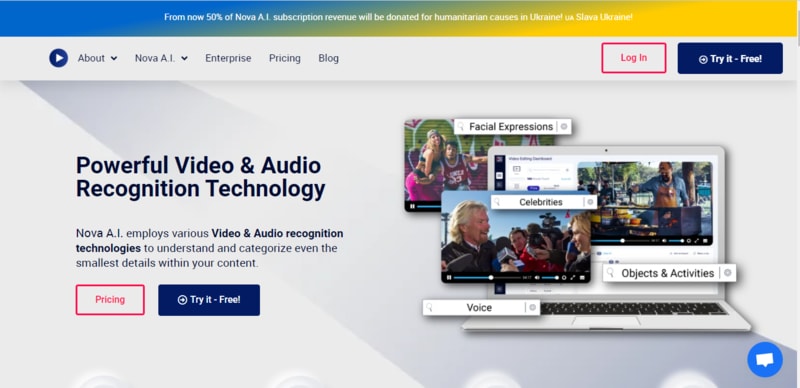
02Sensifai
This software uses AI tools to recognize live images and videos. It also aims to identify logos, attributes, nudity, actions, scenes, objects, celebrities, and landmarks.
Features of Sensifai
● It finds and tags drinking, nudity, smoking, violence, and swearwords in videos and images.
● Sensifai recognizes and tags millions of actions, attributes, concepts, objects, and sports in your images and videos.
● It recognizes explosions, fire, unknown person on your property, and suspicious sounds, including window and cry breaking.
● It can also add sub-title automatically to your audio and video files and make them searchable.
● It can permanently monitor your loved ones when they are all alone and receive an alarm when you feel there is a threat.
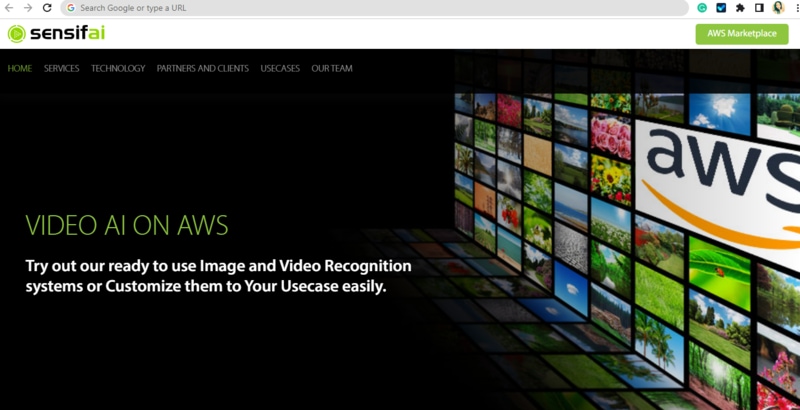
03Object Detection
This AI-powered software turns your computer into a powerful video-security system by allowing you to watch what is going on remotely in your business or home.
Features of Object Detection
● The intelligent subsystem can single-handedly detect IP cameras and connects them to the application.
● It enriches video surveillance with artificial intelligence to recognize objects in real-time.
● It has a web camera cloud that helps use video surveillance based on artificial intelligence.
● Perfect for video surveillance cloud
● The software will automatically upload the video to Telegram messenger or YouTube during specific events.

04Cloud Video Intelligence API
This powerful AI, video recognition software, powered by Google Cloud, enables powerful content discovery and engaging video experiences.
Features of Cloud Video Intelligence API
● Allows for precise video analysis that helps to recognize over 20,000 places, objects, places, and actions in a video
● It helps to extract rich metadata at the video frame level or shot
● Assists in the creation of custom personal entity labels with AutoML Video Intelligence
● Gain near real-time insights with object-based event triggers and streaming video annotation
● Helps in building engaging customer experiences with recommendations, highlight reels, etc.

05Valossa
Valossa is an AI software that helps to reveal the real meaning of content inside audio and visual data. This cognitive AI helps video-based businesses to manage and grow their business safely.
Features of Valossa
● Perfect software for businesses working with video
● This video recognition software is available as an on-premise and SaaS service software solution.
● The AI technology combines recognition with high-level semantic inferencing and multimodal video analysis to make sense of video content data.
● It helps to profile videos for contextual advertising.
● Allows the application of AI automation for immersive video on demand (VOD) and over-the-top (OTT) user experiences.
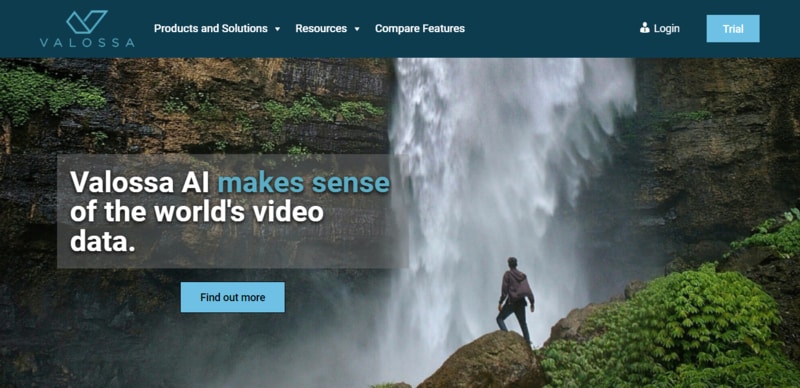
06Thetake.ai
This software harnesses machine learning to identify people and products in a video automatically. It is an artificial intelligence tool that understands the video.
Features of Thetakeai
● Perfect for Content Creators and Hardware Manufacturers to Power Shoppable Content.
● Provides efficiency for viewers in identifying the products they discover in the content they love
● It helps in improving the viewer’s experience
● Transform ways in product discovery and content engagement
● More focused on problem-solving
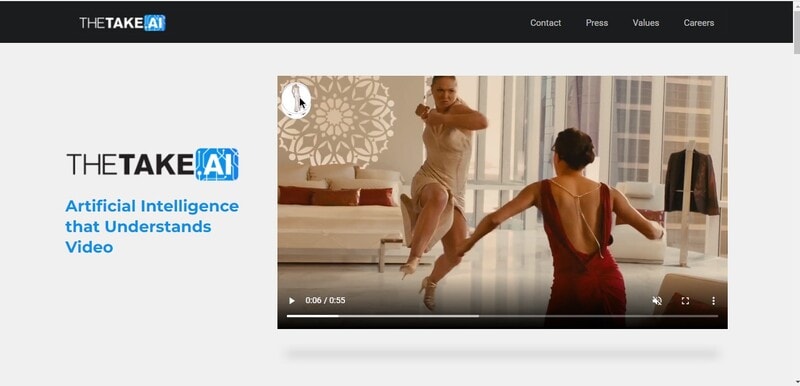
07****Wondershare Filmora Video Editor **
Filmora’s new update brings a set of exclusive features with which you can create high-quality AI videos with a touch of a few fingers.
For Win 7 or later (64-bit)
For macOS 10.12 or later
For example, you can add effects to a particular object by pinpointing its movement with its motion tracking feature. Similarly, its new Speed Ramping feature assists you in adjusting the speed of the video and lets you create incredible movie-like effects. You can add music to your game video with its Auto Beat Sync feature, and the Instant Mode will help you complete your video recognition AI mode in minutes.
● Ending Thoughts →
● First, we learned what AI is and how AI recognition works.
● Then, we compared AI recognition with Facial recognition.
● The report also listed the top 6 AI recognition software you should know and
● Lastly, we recommended Filmora as the best software for editing videos recognition with AI software.
● So, try out an AI video recognition today and see the incredible magic.
Artificial Intelligence (AI) software is used to mimic human behavior by learning various insights and data patterns. High features of AI software should include speech and voice recognition, machine learning, virtual assistants, etc. In addition, AI software combined with machine learning can provide various users with the required functionality to simplify the business process.

AI software can develop and build an intelligent application from the beginning with the help of deep learning capabilities and Machine learning. In addition, video recognition AI is the machine’s capacity to analyze, obtain, and process information that it receives from a visual source, specifically video. The video recognition systems help computers comprehend the information received in the large volumes of video feeds, frame by frame.
In this article
01 [What is AI Video Recognition and How Does Video Recognition Work?](#Part 1)
02 [Difference Between AI Video Recognition and Facial Recognition?](#Part 2)
03 [Understanding 6 Top Video Recognition Software](#Part 3)
Part 1 What is AI Video Recognition and How Does Video Recognition Work?
AI Video Recognition is the capability of machines to obtain, analyze, and process information received from videos. It allows us to quickly assess video data by detecting objects, behaviors, people, and vehicles of concern.
In today’s world, we all look at video as a piece of critical evidence used in different situations such as security investigations and law enforcement because it holds a lot of valuable data. In addition, video is seen as a very unclear format lacking context, scheme, and structure, making it hard to deal with. But with the use of AI in machines, you can effectively handle data with video recognition.
Also, video recognition is not the same as facial or image recognition, regardless of its name, even though they are interrelated. Video recognition is referred to as video content analysis or intelligent video analytics because it entails many tasks. Thus, AI is used in video recognition to rapidly reduce the time for research from weeks or months to seconds and process mass video data.
Video recognition employs AI to complete the tasks by applying enhanced deep learning (DL) and computer vision (CV) models to live video streams or recorded video footage. The following are the most common ways AI video recognition works:
● Classification of Image: It allows the selection of the right category for a video
● Localization: It helps to locate a target object in the video
● Detection of Object: Categorize and locate the object in the video
● Identification of Object: Instances of the object of interest
● Tracking of Object: It can track the object’s trajectory, which will change in the video.

Part 2 Difference Between AI Video Recognition and Facial Recognition?
Video recognition AI primarily focuses on comprehending the information or data received from many video feeds, frame by frame. It is the ability to use Artificial Intelligence to quickly process mass video data and reduce the required time for analysis.
Alternatively, facial recognition describes a biometric technology beyond recognizing when a human face is present (Facial detection). Facial recognition attempts to establish the owner of a particular face. AI Facial recognition works by quickly utilizing a computer application that captures an individual’s face’s digital image, sometimes taken from a video frame, and compares it to images stored in the database records.

Part 3 Understanding 6 Top Video Recognition Software
Video Recognition AI Software (VRS) is an AI-powered software that works with digital video surveillance systems to recognize and detect threats. In addition, these threats can be single objects like knives and guns or more complex disturbances and crowd movements. However, the software does not aim to replace the eye of security personnel but to focus their eyes.
01Nova A.I.
This software employs various audio and video recognition technologies to categorize and understand even the most minor details within your content.
Features of Nova A.I
● Analyze: It extracts and discovers every vital moment with computer vision technologies.
● Index: Allows the storage of newly found metadata within your cloud account.
● Awareness: Discover where and when certain content concept appears in your video. It helps understand the in and out of the video.
● Leverage: Utilization of various recognition technologies to leverage all library content instantly
● Differentiate between human speech from the vast pool of sounds available in your video.

02Sensifai
This software uses AI tools to recognize live images and videos. It also aims to identify logos, attributes, nudity, actions, scenes, objects, celebrities, and landmarks.
Features of Sensifai
● It finds and tags drinking, nudity, smoking, violence, and swearwords in videos and images.
● Sensifai recognizes and tags millions of actions, attributes, concepts, objects, and sports in your images and videos.
● It recognizes explosions, fire, unknown person on your property, and suspicious sounds, including window and cry breaking.
● It can also add sub-title automatically to your audio and video files and make them searchable.
● It can permanently monitor your loved ones when they are all alone and receive an alarm when you feel there is a threat.

03Object Detection
This AI-powered software turns your computer into a powerful video-security system by allowing you to watch what is going on remotely in your business or home.
Features of Object Detection
● The intelligent subsystem can single-handedly detect IP cameras and connects them to the application.
● It enriches video surveillance with artificial intelligence to recognize objects in real-time.
● It has a web camera cloud that helps use video surveillance based on artificial intelligence.
● Perfect for video surveillance cloud
● The software will automatically upload the video to Telegram messenger or YouTube during specific events.

04Cloud Video Intelligence API
This powerful AI, video recognition software, powered by Google Cloud, enables powerful content discovery and engaging video experiences.
Features of Cloud Video Intelligence API
● Allows for precise video analysis that helps to recognize over 20,000 places, objects, places, and actions in a video
● It helps to extract rich metadata at the video frame level or shot
● Assists in the creation of custom personal entity labels with AutoML Video Intelligence
● Gain near real-time insights with object-based event triggers and streaming video annotation
● Helps in building engaging customer experiences with recommendations, highlight reels, etc.

05Valossa
Valossa is an AI software that helps to reveal the real meaning of content inside audio and visual data. This cognitive AI helps video-based businesses to manage and grow their business safely.
Features of Valossa
● Perfect software for businesses working with video
● This video recognition software is available as an on-premise and SaaS service software solution.
● The AI technology combines recognition with high-level semantic inferencing and multimodal video analysis to make sense of video content data.
● It helps to profile videos for contextual advertising.
● Allows the application of AI automation for immersive video on demand (VOD) and over-the-top (OTT) user experiences.

06Thetake.ai
This software harnesses machine learning to identify people and products in a video automatically. It is an artificial intelligence tool that understands the video.
Features of Thetakeai
● Perfect for Content Creators and Hardware Manufacturers to Power Shoppable Content.
● Provides efficiency for viewers in identifying the products they discover in the content they love
● It helps in improving the viewer’s experience
● Transform ways in product discovery and content engagement
● More focused on problem-solving

07****Wondershare Filmora Video Editor **
Filmora’s new update brings a set of exclusive features with which you can create high-quality AI videos with a touch of a few fingers.
For Win 7 or later (64-bit)
For macOS 10.12 or later
For example, you can add effects to a particular object by pinpointing its movement with its motion tracking feature. Similarly, its new Speed Ramping feature assists you in adjusting the speed of the video and lets you create incredible movie-like effects. You can add music to your game video with its Auto Beat Sync feature, and the Instant Mode will help you complete your video recognition AI mode in minutes.
● Ending Thoughts →
● First, we learned what AI is and how AI recognition works.
● Then, we compared AI recognition with Facial recognition.
● The report also listed the top 6 AI recognition software you should know and
● Lastly, we recommended Filmora as the best software for editing videos recognition with AI software.
● So, try out an AI video recognition today and see the incredible magic.
Artificial Intelligence (AI) software is used to mimic human behavior by learning various insights and data patterns. High features of AI software should include speech and voice recognition, machine learning, virtual assistants, etc. In addition, AI software combined with machine learning can provide various users with the required functionality to simplify the business process.

AI software can develop and build an intelligent application from the beginning with the help of deep learning capabilities and Machine learning. In addition, video recognition AI is the machine’s capacity to analyze, obtain, and process information that it receives from a visual source, specifically video. The video recognition systems help computers comprehend the information received in the large volumes of video feeds, frame by frame.
In this article
01 [What is AI Video Recognition and How Does Video Recognition Work?](#Part 1)
02 [Difference Between AI Video Recognition and Facial Recognition?](#Part 2)
03 [Understanding 6 Top Video Recognition Software](#Part 3)
Part 1 What is AI Video Recognition and How Does Video Recognition Work?
AI Video Recognition is the capability of machines to obtain, analyze, and process information received from videos. It allows us to quickly assess video data by detecting objects, behaviors, people, and vehicles of concern.
In today’s world, we all look at video as a piece of critical evidence used in different situations such as security investigations and law enforcement because it holds a lot of valuable data. In addition, video is seen as a very unclear format lacking context, scheme, and structure, making it hard to deal with. But with the use of AI in machines, you can effectively handle data with video recognition.
Also, video recognition is not the same as facial or image recognition, regardless of its name, even though they are interrelated. Video recognition is referred to as video content analysis or intelligent video analytics because it entails many tasks. Thus, AI is used in video recognition to rapidly reduce the time for research from weeks or months to seconds and process mass video data.
Video recognition employs AI to complete the tasks by applying enhanced deep learning (DL) and computer vision (CV) models to live video streams or recorded video footage. The following are the most common ways AI video recognition works:
● Classification of Image: It allows the selection of the right category for a video
● Localization: It helps to locate a target object in the video
● Detection of Object: Categorize and locate the object in the video
● Identification of Object: Instances of the object of interest
● Tracking of Object: It can track the object’s trajectory, which will change in the video.

Part 2 Difference Between AI Video Recognition and Facial Recognition?
Video recognition AI primarily focuses on comprehending the information or data received from many video feeds, frame by frame. It is the ability to use Artificial Intelligence to quickly process mass video data and reduce the required time for analysis.
Alternatively, facial recognition describes a biometric technology beyond recognizing when a human face is present (Facial detection). Facial recognition attempts to establish the owner of a particular face. AI Facial recognition works by quickly utilizing a computer application that captures an individual’s face’s digital image, sometimes taken from a video frame, and compares it to images stored in the database records.

Part 3 Understanding 6 Top Video Recognition Software
Video Recognition AI Software (VRS) is an AI-powered software that works with digital video surveillance systems to recognize and detect threats. In addition, these threats can be single objects like knives and guns or more complex disturbances and crowd movements. However, the software does not aim to replace the eye of security personnel but to focus their eyes.
01Nova A.I.
This software employs various audio and video recognition technologies to categorize and understand even the most minor details within your content.
Features of Nova A.I
● Analyze: It extracts and discovers every vital moment with computer vision technologies.
● Index: Allows the storage of newly found metadata within your cloud account.
● Awareness: Discover where and when certain content concept appears in your video. It helps understand the in and out of the video.
● Leverage: Utilization of various recognition technologies to leverage all library content instantly
● Differentiate between human speech from the vast pool of sounds available in your video.

02Sensifai
This software uses AI tools to recognize live images and videos. It also aims to identify logos, attributes, nudity, actions, scenes, objects, celebrities, and landmarks.
Features of Sensifai
● It finds and tags drinking, nudity, smoking, violence, and swearwords in videos and images.
● Sensifai recognizes and tags millions of actions, attributes, concepts, objects, and sports in your images and videos.
● It recognizes explosions, fire, unknown person on your property, and suspicious sounds, including window and cry breaking.
● It can also add sub-title automatically to your audio and video files and make them searchable.
● It can permanently monitor your loved ones when they are all alone and receive an alarm when you feel there is a threat.

03Object Detection
This AI-powered software turns your computer into a powerful video-security system by allowing you to watch what is going on remotely in your business or home.
Features of Object Detection
● The intelligent subsystem can single-handedly detect IP cameras and connects them to the application.
● It enriches video surveillance with artificial intelligence to recognize objects in real-time.
● It has a web camera cloud that helps use video surveillance based on artificial intelligence.
● Perfect for video surveillance cloud
● The software will automatically upload the video to Telegram messenger or YouTube during specific events.

04Cloud Video Intelligence API
This powerful AI, video recognition software, powered by Google Cloud, enables powerful content discovery and engaging video experiences.
Features of Cloud Video Intelligence API
● Allows for precise video analysis that helps to recognize over 20,000 places, objects, places, and actions in a video
● It helps to extract rich metadata at the video frame level or shot
● Assists in the creation of custom personal entity labels with AutoML Video Intelligence
● Gain near real-time insights with object-based event triggers and streaming video annotation
● Helps in building engaging customer experiences with recommendations, highlight reels, etc.

05Valossa
Valossa is an AI software that helps to reveal the real meaning of content inside audio and visual data. This cognitive AI helps video-based businesses to manage and grow their business safely.
Features of Valossa
● Perfect software for businesses working with video
● This video recognition software is available as an on-premise and SaaS service software solution.
● The AI technology combines recognition with high-level semantic inferencing and multimodal video analysis to make sense of video content data.
● It helps to profile videos for contextual advertising.
● Allows the application of AI automation for immersive video on demand (VOD) and over-the-top (OTT) user experiences.

06Thetake.ai
This software harnesses machine learning to identify people and products in a video automatically. It is an artificial intelligence tool that understands the video.
Features of Thetakeai
● Perfect for Content Creators and Hardware Manufacturers to Power Shoppable Content.
● Provides efficiency for viewers in identifying the products they discover in the content they love
● It helps in improving the viewer’s experience
● Transform ways in product discovery and content engagement
● More focused on problem-solving

07****Wondershare Filmora Video Editor **
Filmora’s new update brings a set of exclusive features with which you can create high-quality AI videos with a touch of a few fingers.
For Win 7 or later (64-bit)
For macOS 10.12 or later
For example, you can add effects to a particular object by pinpointing its movement with its motion tracking feature. Similarly, its new Speed Ramping feature assists you in adjusting the speed of the video and lets you create incredible movie-like effects. You can add music to your game video with its Auto Beat Sync feature, and the Instant Mode will help you complete your video recognition AI mode in minutes.
● Ending Thoughts →
● First, we learned what AI is and how AI recognition works.
● Then, we compared AI recognition with Facial recognition.
● The report also listed the top 6 AI recognition software you should know and
● Lastly, we recommended Filmora as the best software for editing videos recognition with AI software.
● So, try out an AI video recognition today and see the incredible magic.
Artificial Intelligence (AI) software is used to mimic human behavior by learning various insights and data patterns. High features of AI software should include speech and voice recognition, machine learning, virtual assistants, etc. In addition, AI software combined with machine learning can provide various users with the required functionality to simplify the business process.

AI software can develop and build an intelligent application from the beginning with the help of deep learning capabilities and Machine learning. In addition, video recognition AI is the machine’s capacity to analyze, obtain, and process information that it receives from a visual source, specifically video. The video recognition systems help computers comprehend the information received in the large volumes of video feeds, frame by frame.
In this article
01 [What is AI Video Recognition and How Does Video Recognition Work?](#Part 1)
02 [Difference Between AI Video Recognition and Facial Recognition?](#Part 2)
03 [Understanding 6 Top Video Recognition Software](#Part 3)
Part 1 What is AI Video Recognition and How Does Video Recognition Work?
AI Video Recognition is the capability of machines to obtain, analyze, and process information received from videos. It allows us to quickly assess video data by detecting objects, behaviors, people, and vehicles of concern.
In today’s world, we all look at video as a piece of critical evidence used in different situations such as security investigations and law enforcement because it holds a lot of valuable data. In addition, video is seen as a very unclear format lacking context, scheme, and structure, making it hard to deal with. But with the use of AI in machines, you can effectively handle data with video recognition.
Also, video recognition is not the same as facial or image recognition, regardless of its name, even though they are interrelated. Video recognition is referred to as video content analysis or intelligent video analytics because it entails many tasks. Thus, AI is used in video recognition to rapidly reduce the time for research from weeks or months to seconds and process mass video data.
Video recognition employs AI to complete the tasks by applying enhanced deep learning (DL) and computer vision (CV) models to live video streams or recorded video footage. The following are the most common ways AI video recognition works:
● Classification of Image: It allows the selection of the right category for a video
● Localization: It helps to locate a target object in the video
● Detection of Object: Categorize and locate the object in the video
● Identification of Object: Instances of the object of interest
● Tracking of Object: It can track the object’s trajectory, which will change in the video.

Part 2 Difference Between AI Video Recognition and Facial Recognition?
Video recognition AI primarily focuses on comprehending the information or data received from many video feeds, frame by frame. It is the ability to use Artificial Intelligence to quickly process mass video data and reduce the required time for analysis.
Alternatively, facial recognition describes a biometric technology beyond recognizing when a human face is present (Facial detection). Facial recognition attempts to establish the owner of a particular face. AI Facial recognition works by quickly utilizing a computer application that captures an individual’s face’s digital image, sometimes taken from a video frame, and compares it to images stored in the database records.

Part 3 Understanding 6 Top Video Recognition Software
Video Recognition AI Software (VRS) is an AI-powered software that works with digital video surveillance systems to recognize and detect threats. In addition, these threats can be single objects like knives and guns or more complex disturbances and crowd movements. However, the software does not aim to replace the eye of security personnel but to focus their eyes.
01Nova A.I.
This software employs various audio and video recognition technologies to categorize and understand even the most minor details within your content.
Features of Nova A.I
● Analyze: It extracts and discovers every vital moment with computer vision technologies.
● Index: Allows the storage of newly found metadata within your cloud account.
● Awareness: Discover where and when certain content concept appears in your video. It helps understand the in and out of the video.
● Leverage: Utilization of various recognition technologies to leverage all library content instantly
● Differentiate between human speech from the vast pool of sounds available in your video.

02Sensifai
This software uses AI tools to recognize live images and videos. It also aims to identify logos, attributes, nudity, actions, scenes, objects, celebrities, and landmarks.
Features of Sensifai
● It finds and tags drinking, nudity, smoking, violence, and swearwords in videos and images.
● Sensifai recognizes and tags millions of actions, attributes, concepts, objects, and sports in your images and videos.
● It recognizes explosions, fire, unknown person on your property, and suspicious sounds, including window and cry breaking.
● It can also add sub-title automatically to your audio and video files and make them searchable.
● It can permanently monitor your loved ones when they are all alone and receive an alarm when you feel there is a threat.

03Object Detection
This AI-powered software turns your computer into a powerful video-security system by allowing you to watch what is going on remotely in your business or home.
Features of Object Detection
● The intelligent subsystem can single-handedly detect IP cameras and connects them to the application.
● It enriches video surveillance with artificial intelligence to recognize objects in real-time.
● It has a web camera cloud that helps use video surveillance based on artificial intelligence.
● Perfect for video surveillance cloud
● The software will automatically upload the video to Telegram messenger or YouTube during specific events.

04Cloud Video Intelligence API
This powerful AI, video recognition software, powered by Google Cloud, enables powerful content discovery and engaging video experiences.
Features of Cloud Video Intelligence API
● Allows for precise video analysis that helps to recognize over 20,000 places, objects, places, and actions in a video
● It helps to extract rich metadata at the video frame level or shot
● Assists in the creation of custom personal entity labels with AutoML Video Intelligence
● Gain near real-time insights with object-based event triggers and streaming video annotation
● Helps in building engaging customer experiences with recommendations, highlight reels, etc.

05Valossa
Valossa is an AI software that helps to reveal the real meaning of content inside audio and visual data. This cognitive AI helps video-based businesses to manage and grow their business safely.
Features of Valossa
● Perfect software for businesses working with video
● This video recognition software is available as an on-premise and SaaS service software solution.
● The AI technology combines recognition with high-level semantic inferencing and multimodal video analysis to make sense of video content data.
● It helps to profile videos for contextual advertising.
● Allows the application of AI automation for immersive video on demand (VOD) and over-the-top (OTT) user experiences.

06Thetake.ai
This software harnesses machine learning to identify people and products in a video automatically. It is an artificial intelligence tool that understands the video.
Features of Thetakeai
● Perfect for Content Creators and Hardware Manufacturers to Power Shoppable Content.
● Provides efficiency for viewers in identifying the products they discover in the content they love
● It helps in improving the viewer’s experience
● Transform ways in product discovery and content engagement
● More focused on problem-solving

07****Wondershare Filmora Video Editor **
Filmora’s new update brings a set of exclusive features with which you can create high-quality AI videos with a touch of a few fingers.
For Win 7 or later (64-bit)
For macOS 10.12 or later
For example, you can add effects to a particular object by pinpointing its movement with its motion tracking feature. Similarly, its new Speed Ramping feature assists you in adjusting the speed of the video and lets you create incredible movie-like effects. You can add music to your game video with its Auto Beat Sync feature, and the Instant Mode will help you complete your video recognition AI mode in minutes.
● Ending Thoughts →
● First, we learned what AI is and how AI recognition works.
● Then, we compared AI recognition with Facial recognition.
● The report also listed the top 6 AI recognition software you should know and
● Lastly, we recommended Filmora as the best software for editing videos recognition with AI software.
● So, try out an AI video recognition today and see the incredible magic.
How to Google Meet Green Screen
Google meet green screen is the latest addition to the virtual meeting app. It is a crucial feature as it allows users to maintain a semblance of privacy through virtual backgrounds. This video communication app has been a popular choice for classrooms and workplaces since the COVID 19 pandemic of 2019. Since then, Google meet has seen an increase of 3 million users per day since 2020.
The green screen for Google meet has come in handy for its millions of active users across the globe. It is an important feature that safeguards the privacy of its user in the cyber world. Google meet green screen allows you to alter the meeting’s background in real-time, similar to how movies employ the famous green curtain behind the performers during filming. You can use this feature to immediately insert a backdrop image of your choice by activating the green screen provided in the browser extension Visual Effects for Google Meet.
Uses of Google Meet Green Screen
The Google Meet Green Screen feature keeps things interesting in corporate meetings. It also allows users to hide their backgrounds which can often be a source of discomfort or vulnerability. The green screen for Google Meet is a handy feature as you can now attend meetings without worrying about the background.
Virtual Green Screens, Blur, Pixelate, Inverse, Contrast and More! This extension allows you to apply effects like Blur, Pixelate and Inverse to your camera live during Google Meets. And you can use the Virtual Green Screen feature to mask whatever you would not fancy appearing in your videos’ background.
Green screen from Google helps you limit distractions or make video calls more fun, you can now blur or replace your background or replace it with an image, an immersive background, or a video. You can also apply styles to customize your video with various light, color filters and stylized backgrounds.
How to Use Green Screen on Google Meet
With Google Meet Green Screen, you can create a virtual background by either uploading photographs from their PC or using the extension’s stock photos. You can utilize an office background as a backdrop for business meetings. Teachers can add a classroom background to their online classes. Parties and vacation backgrounds from other nations might be used for informal encounters with friends.
For a get-together with friends, users might choose a Hawaii theme or an office wall for business chats. You can create and save as many background photos as you want with Google Meet Green Screen. In addition to all of this, it offers a picture-in-picture (floating window) function that users can enable if desired.
How to use green screen for Google Meet: A guide
You can select a virtual background before beginning a meeting or during an ongoing video conversation. However, this feature is only available on the desktop currently. You can follow the steps given below to use the Green Screen for Google Meet.
Prior to a video call
- Go to Google Meet and select a meeting.
- Change the background of your self-view by clicking Change Background in the bottom right corner.
- Click Blur your background to totally blur your background.
- Click Somewhat blur your background to blur your background slightly.
- Click background to select a previously downloaded backdrop.
- Click Add to add your own image as a background.
- Click on Join Now.
During a video conference
- Click More at the bottom of the page.
- Select Change Background from the drop-down menu.
- Click Blur your background to totally blur your background.
- Click Somewhat blur your background to blur your background slightly.
- Click a background to select a previously downloaded backdrop.
- Click Add to add your own image as a background.
Extra Tips
How to Add Green Screen to Meeting Video
Prior to a video call
- Go to Google Meet and select a meeting.
- Change the background of your self-view by clicking Change Background in the bottom right corner. Click Blur your background to totally blur your background. …
- Click Add to add your own image as a background.
- Click on Join Now.
Filmora
If you’re just starting out with video editing, or just want a simple program that works, Wondershare Filmora might be what you’re looking for. It has the essential tools, and anyone can learn to use it easily.
Wondershare Filmora is the one of best video editing software with cool features that compares to other competing video editing Softwares. Many video editing programs claim to offer professional results; Filmora is one of a few consumer-level tools that actually delivers.
For Win 7 or later (64-bit)
For macOS 10.12 or later
Installation Steps
- Click the icon in the center of the Media Library to add files directly.
- Go File > Import Media > Import Media Files.
- Drag and drop to the Media Library directly.
While importing a media file, Wondershar Filmora may ask you if you wish to create a proxy file to accelerate the editing process. Select “Yes” to have a fast video editing experience.
You can also import video clips using your Touch Bar controls if your computer has Touch Bar.
Record a media file
Apart from the videos shot by your digital devices, you can also directly import media files by recording video from your webcam, capturing the computer screen, or recording a voice-over.
Record computer screen:
Click the “Record” option, and choose “Record PC Screen” to get the built-in Wondershare Screen Recorder. Hit the red button to get started. If you want to stop the recording, you can hit F9.
Record videos from webcam:
Also, click the “Record” option, and choose “Record from Webcam”. In the pop-up Video Recording window, click the red button to start recording and click it again to stop recording. Then click OK to save the recorded video file.
Record voice-over:
Choose “Record a voiceover” under the Record menu. It would be better to connect a microphone to your Mac for a better result. Hit the Record button, and it leaves you 3 seconds to get ready.
All the recorded media files will be saved into Media Library automatically and you can drag them to the Timeline for editing.
Conclusion
The zoom meeting green screen for Google background feature essentially allows users to display an image or a video in place of the actual background during video calls. The feature is especially helpful when you are video conferencing in a messy room. The feature is starting to gain popularity among users and is also available on WebEx for iOS. While Google Meet does not come with a built-in feature to blur or obscure the existing background while on camera, there are still ways you can do it. Luckily, there are a bunch of third-party tools that can build a virtual background for you without a green screen. One of the popular tools you can use is ChromaCam and can be configured in just a few minutes.
During a video conference
- Click More at the bottom of the page.
- Select Change Background from the drop-down menu.
- Click Blur your background to totally blur your background.
- Click Somewhat blur your background to blur your background slightly.
- Click a background to select a previously downloaded backdrop.
- Click Add to add your own image as a background.
Extra Tips
How to Add Green Screen to Meeting Video
Prior to a video call
- Go to Google Meet and select a meeting.
- Change the background of your self-view by clicking Change Background in the bottom right corner. Click Blur your background to totally blur your background. …
- Click Add to add your own image as a background.
- Click on Join Now.
Filmora
If you’re just starting out with video editing, or just want a simple program that works, Wondershare Filmora might be what you’re looking for. It has the essential tools, and anyone can learn to use it easily.
Wondershare Filmora is the one of best video editing software with cool features that compares to other competing video editing Softwares. Many video editing programs claim to offer professional results; Filmora is one of a few consumer-level tools that actually delivers.
For Win 7 or later (64-bit)
For macOS 10.12 or later
Installation Steps
- Click the icon in the center of the Media Library to add files directly.
- Go File > Import Media > Import Media Files.
- Drag and drop to the Media Library directly.
While importing a media file, Wondershar Filmora may ask you if you wish to create a proxy file to accelerate the editing process. Select “Yes” to have a fast video editing experience.
You can also import video clips using your Touch Bar controls if your computer has Touch Bar.
Record a media file
Apart from the videos shot by your digital devices, you can also directly import media files by recording video from your webcam, capturing the computer screen, or recording a voice-over.
Record computer screen:
Click the “Record” option, and choose “Record PC Screen” to get the built-in Wondershare Screen Recorder. Hit the red button to get started. If you want to stop the recording, you can hit F9.
Record videos from webcam:
Also, click the “Record” option, and choose “Record from Webcam”. In the pop-up Video Recording window, click the red button to start recording and click it again to stop recording. Then click OK to save the recorded video file.
Record voice-over:
Choose “Record a voiceover” under the Record menu. It would be better to connect a microphone to your Mac for a better result. Hit the Record button, and it leaves you 3 seconds to get ready.
All the recorded media files will be saved into Media Library automatically and you can drag them to the Timeline for editing.
Conclusion
The zoom meeting green screen for Google background feature essentially allows users to display an image or a video in place of the actual background during video calls. The feature is especially helpful when you are video conferencing in a messy room. The feature is starting to gain popularity among users and is also available on WebEx for iOS. While Google Meet does not come with a built-in feature to blur or obscure the existing background while on camera, there are still ways you can do it. Luckily, there are a bunch of third-party tools that can build a virtual background for you without a green screen. One of the popular tools you can use is ChromaCam and can be configured in just a few minutes.
During a video conference
- Click More at the bottom of the page.
- Select Change Background from the drop-down menu.
- Click Blur your background to totally blur your background.
- Click Somewhat blur your background to blur your background slightly.
- Click a background to select a previously downloaded backdrop.
- Click Add to add your own image as a background.
Extra Tips
How to Add Green Screen to Meeting Video
Prior to a video call
- Go to Google Meet and select a meeting.
- Change the background of your self-view by clicking Change Background in the bottom right corner. Click Blur your background to totally blur your background. …
- Click Add to add your own image as a background.
- Click on Join Now.
Filmora
If you’re just starting out with video editing, or just want a simple program that works, Wondershare Filmora might be what you’re looking for. It has the essential tools, and anyone can learn to use it easily.
Wondershare Filmora is the one of best video editing software with cool features that compares to other competing video editing Softwares. Many video editing programs claim to offer professional results; Filmora is one of a few consumer-level tools that actually delivers.
For Win 7 or later (64-bit)
For macOS 10.12 or later
Installation Steps
- Click the icon in the center of the Media Library to add files directly.
- Go File > Import Media > Import Media Files.
- Drag and drop to the Media Library directly.
While importing a media file, Wondershar Filmora may ask you if you wish to create a proxy file to accelerate the editing process. Select “Yes” to have a fast video editing experience.
You can also import video clips using your Touch Bar controls if your computer has Touch Bar.
Record a media file
Apart from the videos shot by your digital devices, you can also directly import media files by recording video from your webcam, capturing the computer screen, or recording a voice-over.
Record computer screen:
Click the “Record” option, and choose “Record PC Screen” to get the built-in Wondershare Screen Recorder. Hit the red button to get started. If you want to stop the recording, you can hit F9.
Record videos from webcam:
Also, click the “Record” option, and choose “Record from Webcam”. In the pop-up Video Recording window, click the red button to start recording and click it again to stop recording. Then click OK to save the recorded video file.
Record voice-over:
Choose “Record a voiceover” under the Record menu. It would be better to connect a microphone to your Mac for a better result. Hit the Record button, and it leaves you 3 seconds to get ready.
All the recorded media files will be saved into Media Library automatically and you can drag them to the Timeline for editing.
Conclusion
The zoom meeting green screen for Google background feature essentially allows users to display an image or a video in place of the actual background during video calls. The feature is especially helpful when you are video conferencing in a messy room. The feature is starting to gain popularity among users and is also available on WebEx for iOS. While Google Meet does not come with a built-in feature to blur or obscure the existing background while on camera, there are still ways you can do it. Luckily, there are a bunch of third-party tools that can build a virtual background for you without a green screen. One of the popular tools you can use is ChromaCam and can be configured in just a few minutes.
During a video conference
- Click More at the bottom of the page.
- Select Change Background from the drop-down menu.
- Click Blur your background to totally blur your background.
- Click Somewhat blur your background to blur your background slightly.
- Click a background to select a previously downloaded backdrop.
- Click Add to add your own image as a background.
Extra Tips
How to Add Green Screen to Meeting Video
Prior to a video call
- Go to Google Meet and select a meeting.
- Change the background of your self-view by clicking Change Background in the bottom right corner. Click Blur your background to totally blur your background. …
- Click Add to add your own image as a background.
- Click on Join Now.
Filmora
If you’re just starting out with video editing, or just want a simple program that works, Wondershare Filmora might be what you’re looking for. It has the essential tools, and anyone can learn to use it easily.
Wondershare Filmora is the one of best video editing software with cool features that compares to other competing video editing Softwares. Many video editing programs claim to offer professional results; Filmora is one of a few consumer-level tools that actually delivers.
For Win 7 or later (64-bit)
For macOS 10.12 or later
Installation Steps
- Click the icon in the center of the Media Library to add files directly.
- Go File > Import Media > Import Media Files.
- Drag and drop to the Media Library directly.
While importing a media file, Wondershar Filmora may ask you if you wish to create a proxy file to accelerate the editing process. Select “Yes” to have a fast video editing experience.
You can also import video clips using your Touch Bar controls if your computer has Touch Bar.
Record a media file
Apart from the videos shot by your digital devices, you can also directly import media files by recording video from your webcam, capturing the computer screen, or recording a voice-over.
Record computer screen:
Click the “Record” option, and choose “Record PC Screen” to get the built-in Wondershare Screen Recorder. Hit the red button to get started. If you want to stop the recording, you can hit F9.
Record videos from webcam:
Also, click the “Record” option, and choose “Record from Webcam”. In the pop-up Video Recording window, click the red button to start recording and click it again to stop recording. Then click OK to save the recorded video file.
Record voice-over:
Choose “Record a voiceover” under the Record menu. It would be better to connect a microphone to your Mac for a better result. Hit the Record button, and it leaves you 3 seconds to get ready.
All the recorded media files will be saved into Media Library automatically and you can drag them to the Timeline for editing.
Conclusion
The zoom meeting green screen for Google background feature essentially allows users to display an image or a video in place of the actual background during video calls. The feature is especially helpful when you are video conferencing in a messy room. The feature is starting to gain popularity among users and is also available on WebEx for iOS. While Google Meet does not come with a built-in feature to blur or obscure the existing background while on camera, there are still ways you can do it. Luckily, there are a bunch of third-party tools that can build a virtual background for you without a green screen. One of the popular tools you can use is ChromaCam and can be configured in just a few minutes.
How to Create an Instant Slideshow on Mac
How to Create an Instant Slideshow on Mac
An easy yet powerful editor
Numerous effects to choose from
Detailed tutorials provided by the official channel
Instant slideshows on Mac devices are elusive graphic elements to creatively convey your information to the target audience. Stay here to have a complete knowhow of the design process!
In this article
01 [How to Create a Slideshow in Photos on Mac](#Part 1)
02 [How to Create a Slideshow in Video on Mac](#Part 2)
03 [How to Make a Slideshow on Mac in Preview](#Part 3)
04 [How to Create Slideshows Online](#Part 4)
05 [FAQs About Slideshows on Mac](#Part 5)
Part 1 How to Create a Slideshow in Photos on Mac
Creating a slideshow is an intuitive exploration of your graphic design skills, either just for a fun-filled entertainment, or catering to some specific information delivery on the professional front. When aiming to create Mac photos slideshow presentations, you can affordably pick any of your preferred devices and a suitable slideshow creator tool.
Speaking in the light of the fact, it is an equally amazing experience to design exemplary movies and presentations for a slide show MacBook, thanks to the high end technical abilities of such devices that work together to facilitate a remarkable and classic slideshow output. Having said that, let us proceed with discussing about the process of creating slideshow Mac presentations in the ‘Photos’ app of a Mac supported device in the following section:
User’s Guide to Create a Slideshow in the Photos App of a Mac Device
Step 1: Launch the App
Open the apps gallery of your Mac device and navigate to the ‘Photos’ app. Launch the same to be greeted by the latter’s welcome screen. Next, head to the sidebar in the left and hit the ‘Library’ option under the ‘Photos’ tab.
Step 2: Select Your Images
Within the ‘Library’ tab, hit the ‘Days’ or ‘All Photos’ subcategory to choose the desired images and videos that you wish to include in your presentation to create slideshow on Mac.
Step 3: View the Presentation
The ‘Photos’ app has a feature to automatically transform your selections in the previous step into an impressive slideshow. You can take a look at the created Mac photo slideshow by navigating to the ‘Menu Bar’ at the top of the app screen and hitting the ‘File’ tab, followed by selecting the ‘Play Slideshow’ option from the dropdown menu that appears next.
Step 4: Customize Your Slideshow
Completion of Step 3 causes a customization window to pop up, where you can select a vibrant theme and background music for your presentation. Once you have made your choices, you can visualize their appearance in the ‘Preview’ window at the right side of the screen.
About the selection of background music, you can either choose an audio track from the in-built music app of your iPad, or go with the inline complementary music of the presentation theme that you have already selected.
Step 5: It’s Time to Play!
When everything seems fine and you are satisfied with your efforts, head to the ‘File’ tab again and select the ‘Play Slideshow’ from the list of options that drops down to start your MacBook Photos slideshow. Once the slideshow begins to run, you can use the ‘Arrow Keys’ on your device to navigate forward and backward within the presentation, or press the ‘Spacebar’ to pause/resume the slideshow. If you want to stop playing the slideshow, press either of the ‘Escape’ or ‘X’ keys on your system’s keyboard.
Part 2 How to Create a Slideshow in Video on Mac
While image centered slideshows add life to still photos, video editions of the same are highly effective in integrating motion with visual excellence. Creating a slideshow on Mac is easy enough. However, if you wish to design elusive video presentations on the device, it is no difficult either. Having understood the credibility and design process of still presentations, let us move ahead with getting an insight into crafting classic masterpieces of video slideshows on a Mac device in what follows next:
User’s Guide to Create a Video Slideshow in a Mac Device
Step 1: Download and Install a Suitable Video Editor Application
Browsing the IT market, you can easily pick your preferred Mac compatible video editing software to address the concern of how to make a slideshow on Mac. As of now, let us try hands at understanding the creation process through the Movavi Slideshow Maker application.
Start with navigating to and downloading the Movavi Slideshow Maker software from the latter’s official website. Having done that, proceed to install the program in your Mac device by following the on screen instructions to run the installation files.
Step 2: Select a Working Mode
After a successful installation of the program, proceed to launch it in your Mac device and wait for the app’s welcome screen to appear. Choosing the Movavi Slideshow Maker program for creating Mac slideshow presentations, you are allowed to work in 2 different creation modes.
If you wish to explicitly convert still images into stunning slideshows, select the ‘Slideshow Wizard’ mode. On the contrary, if you have a task of designing a high end, professional presentation with a series of elements, prefer choosing the ‘Create a Movie in Manual Mode’ option.
Having talked enough about how to create slideshow presentations with images on a Mac device in the previous section, let us now dive into making a classic video presentation on the same, in what follows next. As already stated; select ‘Create a Movie in Manual Mode’ from the software’s main interface to begin with the creation process.
Step 3: Import Media Files
Browse through the local media gallery on your Mac device to select the required image and video files that you wish to create the slideshow presentation from. To do this, navigate to the ‘Elements Panel’ at the left and hit the ‘Import’ tab, followed by clicking on the ‘Add Files’ option in the software’s editor timeline and navigate through your locally saved media files.
When you have selected everything, your choices will automatically appear in the app’s editing workspace. You can alternatively, prefer dragging and dropping the associated files directly to the software timeline.
Step 4: Include Transitions
Adding a suitable transition effect gives the perfect flow to your presentation, while eliminating distortions in between successive slides. To supplement your slideshow with the same, navigate to the ‘Elements Panel’ at the left of the editor timeline and hit the ‘Transitions’ tab. You can choose any preferred transition style from the variety of available options in line with the theme of your presentation.
When you have made your choice, drag the same in between the desired pair of consecutive slides within the editor workspace. If you require supplementing all the presentation slides with a particular transition effect, click on the icon beside the ‘Transitions’ tab to automatically add a selected transition effect to all the slides together.
Step 5: Add an Upbeat Background Music
To add a preferred background audio, head to the ‘Import’ tab in the left side ‘Elements Panel’ and click on the same to see the ‘Add Files’ option. Here, you can traverse through your device’s media gallery and select a desired soundtrack. Click on the track’s thumbnail to automatically include it within the ‘Audio Track’ of the software timeline.
Step 6: Include Titles and Captions
To add text customizations within your presentations, head to the ‘Elements Panel’ at the left and hit the ‘Titles’ tab to open the program’s preset title options. You can select any suitable annotation for your slideshow, followed by dragging and dropping the same to the editor workspace to include it in the presentation.
You can customize the added title by double clicking on the same, either in the ‘Preview’ window above the editor timeline, or within the timeline itself. Next, double click within the text box in the ‘Preview’ window to type the desired text for including it into the slideshow.
To adjust text parameters like, size, font, color of the added title, double click on the same within the program’s timeline to open the title customization interface in the ‘Preview’ window, where you get the liberty to make desired modifications in the preset parameter values. When you have made the required changes, hit ‘Apply’ to confirm them.
Step 7: Export Your Slideshow
When you are satisfied with your efforts till here, proceed to save the presentation by navigating to and hitting the ‘Export’ tab at the right side of the editor workspace. This will direct you to the slideshow export interface, where you can choose from a variety of file saving options according to your specific needs.
Click on ‘Save Video File’ to add the presentation to your device’s local media gallery, or hit the ‘Save for Devices’ option to preserve your creation for an external device export. For a direct export of the slideshow to your ‘YouTube’ channel, click on ‘Upload to YouTube’, or choose to save the presentation in any of the MP4, OGV and WebM media file formats for an online sharing purpose. Once you are done with making all the selections and adjustments, head to and tap the ‘Start’ button.
Part 3 How to Make a Slideshow on Mac in Preview
When the question is how to create a slideshow on Mac devices, the answer can have a diverse range of aspects. You can work with the ‘Photos’ app, create a video slideshow, and much more. Exploring the domain, let us proceed with learning to create a Mac slideshow in the Preview feature of the device in the following section:
User’s Guide to Create a Slideshow in the Preview App of a Mac Device
Step 1: Launch the Application
In the launchpad of your Mac device, head to and tap the ‘Preview’ app icon frame to open the same.
Step 2: Choose Your Photos
Browse through the local media gallery of your device and select the desired images that you wish to include within the presentation. Click the ‘Open’ button, once you have made your choices.
Step 3: Play the Presentation
Navigate to the ‘Functions Toolbar’ at the top of the app’s main interface and hit the ‘View’ tab, followed by clicking on the ‘Slideshow’ option from the dropdown list that appears next.
Step 4: That’s It!
You can now watch and control the automatically created slideshow through the respective buttons that appear on the screen.
Part 4 How to Create Slideshows Online
As is evident by now that MacBook slideshow presentations have a diversity of creation processes and platforms, you can conveniently pick the one that suits your specific design concerns and portability requirements. After discussing about the ways to make Mac compatible slideshow presentations on external software platforms, as well as on the device itself, let us now have an insight into the process of creating slideshows on online utilities in the following section:
User’s Guide to Create Online Slideshow Presentations
Step 1: Launch a Preferred Online Tool
In any of your favorite web browsers, navigate to and launch any desired online slideshow creator tool from its official website. As of now, let us proceed with using the Kapwing video slideshow maker.
Step 2: Upload Media Files
Browse through the media gallery of your device to select and upload the desired set of images, GIFs and videos to the Kapwing video slideshow maker online tool. You can also ‘Drag and Drop’ the media directly to the tool’s editor workspace.
In addition to choosing media files from your device, you can directly import the same from online sources, like, YouTube, Twitter, etc., by copying the media link and pasting it within the tool’s media URL box. The Kapwing slideshow maker allows you to work with a series of media file formats, such as, MOV, JPG, GIF, MP4, PNG, among others.
Step 3: Sort and Edit Your Presentation
Once all the media files are imported to the workspace, you can use the ‘Slideshow Preview’ to sort the Images and videos within the presentation in a desired sequence of appearance. As far as editing the slideshow is concerned, you can set the orientation of the slides to landscape, square or a 9:16 aspect ratio.
There are options to crop the images and videos to include specific sections, while simultaneously adjusting their screen time. You can further, complement the presentation with a cohesive soundtrack in the background and include different graphic elements, like, stickers, titles and text annotations to craft the perfect slideshow.
Step 4: Time to Share!
When you are happy with your work, proceed to the top right corner of the editor workspace and click on the ‘Export’ tab. The Kapwing video maker will now transform your media into an MP4 slideshow presentation, which you are free to either save locally in your device, or share with your social media peers.
Part 5 FAQs About Slideshows on Mac
● How to delete a slideshow?
To delete a saved slideshow for MacBook, navigate to the latter’s destination folder in your device and browse for the particular presentation you wish to remove. Once found, right click on the same, followed by selecting the ‘Delete’ option from the dropdown menu that appears next. A ‘Delete Slideshow’ conformation box pops up, where you need to click on the ‘Yes’ button to move the presentation to your device’s ‘Trash Can’.
● How to include animations within a slideshow presentation?
If you are working on the concern of how to create a slideshow on Mac in the Photo apps of a Mac device, there is no provision for including animations within the slideshow. If at all you choose to add live images and animation files, they will appear as still images when you run the presentation.
● How to export a slideshow in the video format?
For exporting a created slideshow in the video format, all you need to do is, open the slideshow and navigate to the ‘Export’ button at the top right corner. As you hit the tab, the slideshow export interface pops up, where you can select the desired video format and destination of your slideshow. When you have made your choice, click ‘Save’ at the bottom right corner.
● How to create slideshows for Facebook?
To create a slideshow on Facebook, launch the app to login to your Facebook account in your device and head to the ‘Status Update’ tab. From the list of options that follows next, choose ‘Photo/Video’, succeeded by ‘Create a Slideshow’. You can now add the desired media files and adjust the different slideshow parameters to create a presentation.
● How to upload slideshow presentations on Instagram?
To create and upload a slideshow on Instagram, launch the app in your device and click on the ‘+’ icon in the latter’s welcome screen. You now need to hit the ‘Select Multiple’ button and choose the desired images and videos up to a maximum of 10 files from your device to add to the presentation. You can sort the order and add filter customizations before posting your creation. When you are done, click ‘Upload’ and follow the upcoming instructions.
Creating Slideshow Presentations on a Mac Device With Wondershare Filmora Video Editor
For Win 7 or later (64-bit)
For macOS 10.12 or later
The credibility of the Filmora video editor package does not need an introduction in the graphic design world. When the talk is about how to do a slideshow on Mac, the franchise presents its exclusive, Mac compatible slideshow creator program for designing professional quality slideshow movies. The software is handy enough to be easily worked upon by amateurs, casual creators and experienced professionals.
When it comes to the editing flexibility, the program’s inbuilt library is there to deliver a hoard of upgraded and high tech audio-visual and design effects, filters, elements at your disposal. Whether create a presentation from scratch or customize a premade slideshow template, Filmora lets you do everything to generate a slideshow output that is no less than a visual masterpiece. Talking of the output quality, you can safely leave everything to this high resolution program.
● Ending Thoughts →
● Mac devices have a diversity of utilities and in-built apps to automatically create beautiful and stunning slideshow presentations within just a few clicks.
● When addressing the concern of how to make slides on MacBook, you can choose from working with a range of media files to design and customize a classic piece o0f graphic artwork.
● If the talk is about choosing the most reliable Mac slideshow creator alternative, you can pick the Wondershare Filmora slideshow maker application without a second thought.
Instant slideshows on Mac devices are elusive graphic elements to creatively convey your information to the target audience. Stay here to have a complete knowhow of the design process!
In this article
01 [How to Create a Slideshow in Photos on Mac](#Part 1)
02 [How to Create a Slideshow in Video on Mac](#Part 2)
03 [How to Make a Slideshow on Mac in Preview](#Part 3)
04 [How to Create Slideshows Online](#Part 4)
05 [FAQs About Slideshows on Mac](#Part 5)
Part 1 How to Create a Slideshow in Photos on Mac
Creating a slideshow is an intuitive exploration of your graphic design skills, either just for a fun-filled entertainment, or catering to some specific information delivery on the professional front. When aiming to create Mac photos slideshow presentations, you can affordably pick any of your preferred devices and a suitable slideshow creator tool.
Speaking in the light of the fact, it is an equally amazing experience to design exemplary movies and presentations for a slide show MacBook, thanks to the high end technical abilities of such devices that work together to facilitate a remarkable and classic slideshow output. Having said that, let us proceed with discussing about the process of creating slideshow Mac presentations in the ‘Photos’ app of a Mac supported device in the following section:
User’s Guide to Create a Slideshow in the Photos App of a Mac Device
Step 1: Launch the App
Open the apps gallery of your Mac device and navigate to the ‘Photos’ app. Launch the same to be greeted by the latter’s welcome screen. Next, head to the sidebar in the left and hit the ‘Library’ option under the ‘Photos’ tab.
Step 2: Select Your Images
Within the ‘Library’ tab, hit the ‘Days’ or ‘All Photos’ subcategory to choose the desired images and videos that you wish to include in your presentation to create slideshow on Mac.
Step 3: View the Presentation
The ‘Photos’ app has a feature to automatically transform your selections in the previous step into an impressive slideshow. You can take a look at the created Mac photo slideshow by navigating to the ‘Menu Bar’ at the top of the app screen and hitting the ‘File’ tab, followed by selecting the ‘Play Slideshow’ option from the dropdown menu that appears next.
Step 4: Customize Your Slideshow
Completion of Step 3 causes a customization window to pop up, where you can select a vibrant theme and background music for your presentation. Once you have made your choices, you can visualize their appearance in the ‘Preview’ window at the right side of the screen.
About the selection of background music, you can either choose an audio track from the in-built music app of your iPad, or go with the inline complementary music of the presentation theme that you have already selected.
Step 5: It’s Time to Play!
When everything seems fine and you are satisfied with your efforts, head to the ‘File’ tab again and select the ‘Play Slideshow’ from the list of options that drops down to start your MacBook Photos slideshow. Once the slideshow begins to run, you can use the ‘Arrow Keys’ on your device to navigate forward and backward within the presentation, or press the ‘Spacebar’ to pause/resume the slideshow. If you want to stop playing the slideshow, press either of the ‘Escape’ or ‘X’ keys on your system’s keyboard.
Part 2 How to Create a Slideshow in Video on Mac
While image centered slideshows add life to still photos, video editions of the same are highly effective in integrating motion with visual excellence. Creating a slideshow on Mac is easy enough. However, if you wish to design elusive video presentations on the device, it is no difficult either. Having understood the credibility and design process of still presentations, let us move ahead with getting an insight into crafting classic masterpieces of video slideshows on a Mac device in what follows next:
User’s Guide to Create a Video Slideshow in a Mac Device
Step 1: Download and Install a Suitable Video Editor Application
Browsing the IT market, you can easily pick your preferred Mac compatible video editing software to address the concern of how to make a slideshow on Mac. As of now, let us try hands at understanding the creation process through the Movavi Slideshow Maker application.
Start with navigating to and downloading the Movavi Slideshow Maker software from the latter’s official website. Having done that, proceed to install the program in your Mac device by following the on screen instructions to run the installation files.
Step 2: Select a Working Mode
After a successful installation of the program, proceed to launch it in your Mac device and wait for the app’s welcome screen to appear. Choosing the Movavi Slideshow Maker program for creating Mac slideshow presentations, you are allowed to work in 2 different creation modes.
If you wish to explicitly convert still images into stunning slideshows, select the ‘Slideshow Wizard’ mode. On the contrary, if you have a task of designing a high end, professional presentation with a series of elements, prefer choosing the ‘Create a Movie in Manual Mode’ option.
Having talked enough about how to create slideshow presentations with images on a Mac device in the previous section, let us now dive into making a classic video presentation on the same, in what follows next. As already stated; select ‘Create a Movie in Manual Mode’ from the software’s main interface to begin with the creation process.
Step 3: Import Media Files
Browse through the local media gallery on your Mac device to select the required image and video files that you wish to create the slideshow presentation from. To do this, navigate to the ‘Elements Panel’ at the left and hit the ‘Import’ tab, followed by clicking on the ‘Add Files’ option in the software’s editor timeline and navigate through your locally saved media files.
When you have selected everything, your choices will automatically appear in the app’s editing workspace. You can alternatively, prefer dragging and dropping the associated files directly to the software timeline.
Step 4: Include Transitions
Adding a suitable transition effect gives the perfect flow to your presentation, while eliminating distortions in between successive slides. To supplement your slideshow with the same, navigate to the ‘Elements Panel’ at the left of the editor timeline and hit the ‘Transitions’ tab. You can choose any preferred transition style from the variety of available options in line with the theme of your presentation.
When you have made your choice, drag the same in between the desired pair of consecutive slides within the editor workspace. If you require supplementing all the presentation slides with a particular transition effect, click on the icon beside the ‘Transitions’ tab to automatically add a selected transition effect to all the slides together.
Step 5: Add an Upbeat Background Music
To add a preferred background audio, head to the ‘Import’ tab in the left side ‘Elements Panel’ and click on the same to see the ‘Add Files’ option. Here, you can traverse through your device’s media gallery and select a desired soundtrack. Click on the track’s thumbnail to automatically include it within the ‘Audio Track’ of the software timeline.
Step 6: Include Titles and Captions
To add text customizations within your presentations, head to the ‘Elements Panel’ at the left and hit the ‘Titles’ tab to open the program’s preset title options. You can select any suitable annotation for your slideshow, followed by dragging and dropping the same to the editor workspace to include it in the presentation.
You can customize the added title by double clicking on the same, either in the ‘Preview’ window above the editor timeline, or within the timeline itself. Next, double click within the text box in the ‘Preview’ window to type the desired text for including it into the slideshow.
To adjust text parameters like, size, font, color of the added title, double click on the same within the program’s timeline to open the title customization interface in the ‘Preview’ window, where you get the liberty to make desired modifications in the preset parameter values. When you have made the required changes, hit ‘Apply’ to confirm them.
Step 7: Export Your Slideshow
When you are satisfied with your efforts till here, proceed to save the presentation by navigating to and hitting the ‘Export’ tab at the right side of the editor workspace. This will direct you to the slideshow export interface, where you can choose from a variety of file saving options according to your specific needs.
Click on ‘Save Video File’ to add the presentation to your device’s local media gallery, or hit the ‘Save for Devices’ option to preserve your creation for an external device export. For a direct export of the slideshow to your ‘YouTube’ channel, click on ‘Upload to YouTube’, or choose to save the presentation in any of the MP4, OGV and WebM media file formats for an online sharing purpose. Once you are done with making all the selections and adjustments, head to and tap the ‘Start’ button.
Part 3 How to Make a Slideshow on Mac in Preview
When the question is how to create a slideshow on Mac devices, the answer can have a diverse range of aspects. You can work with the ‘Photos’ app, create a video slideshow, and much more. Exploring the domain, let us proceed with learning to create a Mac slideshow in the Preview feature of the device in the following section:
User’s Guide to Create a Slideshow in the Preview App of a Mac Device
Step 1: Launch the Application
In the launchpad of your Mac device, head to and tap the ‘Preview’ app icon frame to open the same.
Step 2: Choose Your Photos
Browse through the local media gallery of your device and select the desired images that you wish to include within the presentation. Click the ‘Open’ button, once you have made your choices.
Step 3: Play the Presentation
Navigate to the ‘Functions Toolbar’ at the top of the app’s main interface and hit the ‘View’ tab, followed by clicking on the ‘Slideshow’ option from the dropdown list that appears next.
Step 4: That’s It!
You can now watch and control the automatically created slideshow through the respective buttons that appear on the screen.
Part 4 How to Create Slideshows Online
As is evident by now that MacBook slideshow presentations have a diversity of creation processes and platforms, you can conveniently pick the one that suits your specific design concerns and portability requirements. After discussing about the ways to make Mac compatible slideshow presentations on external software platforms, as well as on the device itself, let us now have an insight into the process of creating slideshows on online utilities in the following section:
User’s Guide to Create Online Slideshow Presentations
Step 1: Launch a Preferred Online Tool
In any of your favorite web browsers, navigate to and launch any desired online slideshow creator tool from its official website. As of now, let us proceed with using the Kapwing video slideshow maker.
Step 2: Upload Media Files
Browse through the media gallery of your device to select and upload the desired set of images, GIFs and videos to the Kapwing video slideshow maker online tool. You can also ‘Drag and Drop’ the media directly to the tool’s editor workspace.
In addition to choosing media files from your device, you can directly import the same from online sources, like, YouTube, Twitter, etc., by copying the media link and pasting it within the tool’s media URL box. The Kapwing slideshow maker allows you to work with a series of media file formats, such as, MOV, JPG, GIF, MP4, PNG, among others.
Step 3: Sort and Edit Your Presentation
Once all the media files are imported to the workspace, you can use the ‘Slideshow Preview’ to sort the Images and videos within the presentation in a desired sequence of appearance. As far as editing the slideshow is concerned, you can set the orientation of the slides to landscape, square or a 9:16 aspect ratio.
There are options to crop the images and videos to include specific sections, while simultaneously adjusting their screen time. You can further, complement the presentation with a cohesive soundtrack in the background and include different graphic elements, like, stickers, titles and text annotations to craft the perfect slideshow.
Step 4: Time to Share!
When you are happy with your work, proceed to the top right corner of the editor workspace and click on the ‘Export’ tab. The Kapwing video maker will now transform your media into an MP4 slideshow presentation, which you are free to either save locally in your device, or share with your social media peers.
Part 5 FAQs About Slideshows on Mac
● How to delete a slideshow?
To delete a saved slideshow for MacBook, navigate to the latter’s destination folder in your device and browse for the particular presentation you wish to remove. Once found, right click on the same, followed by selecting the ‘Delete’ option from the dropdown menu that appears next. A ‘Delete Slideshow’ conformation box pops up, where you need to click on the ‘Yes’ button to move the presentation to your device’s ‘Trash Can’.
● How to include animations within a slideshow presentation?
If you are working on the concern of how to create a slideshow on Mac in the Photo apps of a Mac device, there is no provision for including animations within the slideshow. If at all you choose to add live images and animation files, they will appear as still images when you run the presentation.
● How to export a slideshow in the video format?
For exporting a created slideshow in the video format, all you need to do is, open the slideshow and navigate to the ‘Export’ button at the top right corner. As you hit the tab, the slideshow export interface pops up, where you can select the desired video format and destination of your slideshow. When you have made your choice, click ‘Save’ at the bottom right corner.
● How to create slideshows for Facebook?
To create a slideshow on Facebook, launch the app to login to your Facebook account in your device and head to the ‘Status Update’ tab. From the list of options that follows next, choose ‘Photo/Video’, succeeded by ‘Create a Slideshow’. You can now add the desired media files and adjust the different slideshow parameters to create a presentation.
● How to upload slideshow presentations on Instagram?
To create and upload a slideshow on Instagram, launch the app in your device and click on the ‘+’ icon in the latter’s welcome screen. You now need to hit the ‘Select Multiple’ button and choose the desired images and videos up to a maximum of 10 files from your device to add to the presentation. You can sort the order and add filter customizations before posting your creation. When you are done, click ‘Upload’ and follow the upcoming instructions.
Creating Slideshow Presentations on a Mac Device With Wondershare Filmora Video Editor
For Win 7 or later (64-bit)
For macOS 10.12 or later
The credibility of the Filmora video editor package does not need an introduction in the graphic design world. When the talk is about how to do a slideshow on Mac, the franchise presents its exclusive, Mac compatible slideshow creator program for designing professional quality slideshow movies. The software is handy enough to be easily worked upon by amateurs, casual creators and experienced professionals.
When it comes to the editing flexibility, the program’s inbuilt library is there to deliver a hoard of upgraded and high tech audio-visual and design effects, filters, elements at your disposal. Whether create a presentation from scratch or customize a premade slideshow template, Filmora lets you do everything to generate a slideshow output that is no less than a visual masterpiece. Talking of the output quality, you can safely leave everything to this high resolution program.
● Ending Thoughts →
● Mac devices have a diversity of utilities and in-built apps to automatically create beautiful and stunning slideshow presentations within just a few clicks.
● When addressing the concern of how to make slides on MacBook, you can choose from working with a range of media files to design and customize a classic piece o0f graphic artwork.
● If the talk is about choosing the most reliable Mac slideshow creator alternative, you can pick the Wondershare Filmora slideshow maker application without a second thought.
Instant slideshows on Mac devices are elusive graphic elements to creatively convey your information to the target audience. Stay here to have a complete knowhow of the design process!
In this article
01 [How to Create a Slideshow in Photos on Mac](#Part 1)
02 [How to Create a Slideshow in Video on Mac](#Part 2)
03 [How to Make a Slideshow on Mac in Preview](#Part 3)
04 [How to Create Slideshows Online](#Part 4)
05 [FAQs About Slideshows on Mac](#Part 5)
Part 1 How to Create a Slideshow in Photos on Mac
Creating a slideshow is an intuitive exploration of your graphic design skills, either just for a fun-filled entertainment, or catering to some specific information delivery on the professional front. When aiming to create Mac photos slideshow presentations, you can affordably pick any of your preferred devices and a suitable slideshow creator tool.
Speaking in the light of the fact, it is an equally amazing experience to design exemplary movies and presentations for a slide show MacBook, thanks to the high end technical abilities of such devices that work together to facilitate a remarkable and classic slideshow output. Having said that, let us proceed with discussing about the process of creating slideshow Mac presentations in the ‘Photos’ app of a Mac supported device in the following section:
User’s Guide to Create a Slideshow in the Photos App of a Mac Device
Step 1: Launch the App
Open the apps gallery of your Mac device and navigate to the ‘Photos’ app. Launch the same to be greeted by the latter’s welcome screen. Next, head to the sidebar in the left and hit the ‘Library’ option under the ‘Photos’ tab.
Step 2: Select Your Images
Within the ‘Library’ tab, hit the ‘Days’ or ‘All Photos’ subcategory to choose the desired images and videos that you wish to include in your presentation to create slideshow on Mac.
Step 3: View the Presentation
The ‘Photos’ app has a feature to automatically transform your selections in the previous step into an impressive slideshow. You can take a look at the created Mac photo slideshow by navigating to the ‘Menu Bar’ at the top of the app screen and hitting the ‘File’ tab, followed by selecting the ‘Play Slideshow’ option from the dropdown menu that appears next.
Step 4: Customize Your Slideshow
Completion of Step 3 causes a customization window to pop up, where you can select a vibrant theme and background music for your presentation. Once you have made your choices, you can visualize their appearance in the ‘Preview’ window at the right side of the screen.
About the selection of background music, you can either choose an audio track from the in-built music app of your iPad, or go with the inline complementary music of the presentation theme that you have already selected.
Step 5: It’s Time to Play!
When everything seems fine and you are satisfied with your efforts, head to the ‘File’ tab again and select the ‘Play Slideshow’ from the list of options that drops down to start your MacBook Photos slideshow. Once the slideshow begins to run, you can use the ‘Arrow Keys’ on your device to navigate forward and backward within the presentation, or press the ‘Spacebar’ to pause/resume the slideshow. If you want to stop playing the slideshow, press either of the ‘Escape’ or ‘X’ keys on your system’s keyboard.
Part 2 How to Create a Slideshow in Video on Mac
While image centered slideshows add life to still photos, video editions of the same are highly effective in integrating motion with visual excellence. Creating a slideshow on Mac is easy enough. However, if you wish to design elusive video presentations on the device, it is no difficult either. Having understood the credibility and design process of still presentations, let us move ahead with getting an insight into crafting classic masterpieces of video slideshows on a Mac device in what follows next:
User’s Guide to Create a Video Slideshow in a Mac Device
Step 1: Download and Install a Suitable Video Editor Application
Browsing the IT market, you can easily pick your preferred Mac compatible video editing software to address the concern of how to make a slideshow on Mac. As of now, let us try hands at understanding the creation process through the Movavi Slideshow Maker application.
Start with navigating to and downloading the Movavi Slideshow Maker software from the latter’s official website. Having done that, proceed to install the program in your Mac device by following the on screen instructions to run the installation files.
Step 2: Select a Working Mode
After a successful installation of the program, proceed to launch it in your Mac device and wait for the app’s welcome screen to appear. Choosing the Movavi Slideshow Maker program for creating Mac slideshow presentations, you are allowed to work in 2 different creation modes.
If you wish to explicitly convert still images into stunning slideshows, select the ‘Slideshow Wizard’ mode. On the contrary, if you have a task of designing a high end, professional presentation with a series of elements, prefer choosing the ‘Create a Movie in Manual Mode’ option.
Having talked enough about how to create slideshow presentations with images on a Mac device in the previous section, let us now dive into making a classic video presentation on the same, in what follows next. As already stated; select ‘Create a Movie in Manual Mode’ from the software’s main interface to begin with the creation process.
Step 3: Import Media Files
Browse through the local media gallery on your Mac device to select the required image and video files that you wish to create the slideshow presentation from. To do this, navigate to the ‘Elements Panel’ at the left and hit the ‘Import’ tab, followed by clicking on the ‘Add Files’ option in the software’s editor timeline and navigate through your locally saved media files.
When you have selected everything, your choices will automatically appear in the app’s editing workspace. You can alternatively, prefer dragging and dropping the associated files directly to the software timeline.
Step 4: Include Transitions
Adding a suitable transition effect gives the perfect flow to your presentation, while eliminating distortions in between successive slides. To supplement your slideshow with the same, navigate to the ‘Elements Panel’ at the left of the editor timeline and hit the ‘Transitions’ tab. You can choose any preferred transition style from the variety of available options in line with the theme of your presentation.
When you have made your choice, drag the same in between the desired pair of consecutive slides within the editor workspace. If you require supplementing all the presentation slides with a particular transition effect, click on the icon beside the ‘Transitions’ tab to automatically add a selected transition effect to all the slides together.
Step 5: Add an Upbeat Background Music
To add a preferred background audio, head to the ‘Import’ tab in the left side ‘Elements Panel’ and click on the same to see the ‘Add Files’ option. Here, you can traverse through your device’s media gallery and select a desired soundtrack. Click on the track’s thumbnail to automatically include it within the ‘Audio Track’ of the software timeline.
Step 6: Include Titles and Captions
To add text customizations within your presentations, head to the ‘Elements Panel’ at the left and hit the ‘Titles’ tab to open the program’s preset title options. You can select any suitable annotation for your slideshow, followed by dragging and dropping the same to the editor workspace to include it in the presentation.
You can customize the added title by double clicking on the same, either in the ‘Preview’ window above the editor timeline, or within the timeline itself. Next, double click within the text box in the ‘Preview’ window to type the desired text for including it into the slideshow.
To adjust text parameters like, size, font, color of the added title, double click on the same within the program’s timeline to open the title customization interface in the ‘Preview’ window, where you get the liberty to make desired modifications in the preset parameter values. When you have made the required changes, hit ‘Apply’ to confirm them.
Step 7: Export Your Slideshow
When you are satisfied with your efforts till here, proceed to save the presentation by navigating to and hitting the ‘Export’ tab at the right side of the editor workspace. This will direct you to the slideshow export interface, where you can choose from a variety of file saving options according to your specific needs.
Click on ‘Save Video File’ to add the presentation to your device’s local media gallery, or hit the ‘Save for Devices’ option to preserve your creation for an external device export. For a direct export of the slideshow to your ‘YouTube’ channel, click on ‘Upload to YouTube’, or choose to save the presentation in any of the MP4, OGV and WebM media file formats for an online sharing purpose. Once you are done with making all the selections and adjustments, head to and tap the ‘Start’ button.
Part 3 How to Make a Slideshow on Mac in Preview
When the question is how to create a slideshow on Mac devices, the answer can have a diverse range of aspects. You can work with the ‘Photos’ app, create a video slideshow, and much more. Exploring the domain, let us proceed with learning to create a Mac slideshow in the Preview feature of the device in the following section:
User’s Guide to Create a Slideshow in the Preview App of a Mac Device
Step 1: Launch the Application
In the launchpad of your Mac device, head to and tap the ‘Preview’ app icon frame to open the same.
Step 2: Choose Your Photos
Browse through the local media gallery of your device and select the desired images that you wish to include within the presentation. Click the ‘Open’ button, once you have made your choices.
Step 3: Play the Presentation
Navigate to the ‘Functions Toolbar’ at the top of the app’s main interface and hit the ‘View’ tab, followed by clicking on the ‘Slideshow’ option from the dropdown list that appears next.
Step 4: That’s It!
You can now watch and control the automatically created slideshow through the respective buttons that appear on the screen.
Part 4 How to Create Slideshows Online
As is evident by now that MacBook slideshow presentations have a diversity of creation processes and platforms, you can conveniently pick the one that suits your specific design concerns and portability requirements. After discussing about the ways to make Mac compatible slideshow presentations on external software platforms, as well as on the device itself, let us now have an insight into the process of creating slideshows on online utilities in the following section:
User’s Guide to Create Online Slideshow Presentations
Step 1: Launch a Preferred Online Tool
In any of your favorite web browsers, navigate to and launch any desired online slideshow creator tool from its official website. As of now, let us proceed with using the Kapwing video slideshow maker.
Step 2: Upload Media Files
Browse through the media gallery of your device to select and upload the desired set of images, GIFs and videos to the Kapwing video slideshow maker online tool. You can also ‘Drag and Drop’ the media directly to the tool’s editor workspace.
In addition to choosing media files from your device, you can directly import the same from online sources, like, YouTube, Twitter, etc., by copying the media link and pasting it within the tool’s media URL box. The Kapwing slideshow maker allows you to work with a series of media file formats, such as, MOV, JPG, GIF, MP4, PNG, among others.
Step 3: Sort and Edit Your Presentation
Once all the media files are imported to the workspace, you can use the ‘Slideshow Preview’ to sort the Images and videos within the presentation in a desired sequence of appearance. As far as editing the slideshow is concerned, you can set the orientation of the slides to landscape, square or a 9:16 aspect ratio.
There are options to crop the images and videos to include specific sections, while simultaneously adjusting their screen time. You can further, complement the presentation with a cohesive soundtrack in the background and include different graphic elements, like, stickers, titles and text annotations to craft the perfect slideshow.
Step 4: Time to Share!
When you are happy with your work, proceed to the top right corner of the editor workspace and click on the ‘Export’ tab. The Kapwing video maker will now transform your media into an MP4 slideshow presentation, which you are free to either save locally in your device, or share with your social media peers.
Part 5 FAQs About Slideshows on Mac
● How to delete a slideshow?
To delete a saved slideshow for MacBook, navigate to the latter’s destination folder in your device and browse for the particular presentation you wish to remove. Once found, right click on the same, followed by selecting the ‘Delete’ option from the dropdown menu that appears next. A ‘Delete Slideshow’ conformation box pops up, where you need to click on the ‘Yes’ button to move the presentation to your device’s ‘Trash Can’.
● How to include animations within a slideshow presentation?
If you are working on the concern of how to create a slideshow on Mac in the Photo apps of a Mac device, there is no provision for including animations within the slideshow. If at all you choose to add live images and animation files, they will appear as still images when you run the presentation.
● How to export a slideshow in the video format?
For exporting a created slideshow in the video format, all you need to do is, open the slideshow and navigate to the ‘Export’ button at the top right corner. As you hit the tab, the slideshow export interface pops up, where you can select the desired video format and destination of your slideshow. When you have made your choice, click ‘Save’ at the bottom right corner.
● How to create slideshows for Facebook?
To create a slideshow on Facebook, launch the app to login to your Facebook account in your device and head to the ‘Status Update’ tab. From the list of options that follows next, choose ‘Photo/Video’, succeeded by ‘Create a Slideshow’. You can now add the desired media files and adjust the different slideshow parameters to create a presentation.
● How to upload slideshow presentations on Instagram?
To create and upload a slideshow on Instagram, launch the app in your device and click on the ‘+’ icon in the latter’s welcome screen. You now need to hit the ‘Select Multiple’ button and choose the desired images and videos up to a maximum of 10 files from your device to add to the presentation. You can sort the order and add filter customizations before posting your creation. When you are done, click ‘Upload’ and follow the upcoming instructions.
Creating Slideshow Presentations on a Mac Device With Wondershare Filmora Video Editor
For Win 7 or later (64-bit)
For macOS 10.12 or later
The credibility of the Filmora video editor package does not need an introduction in the graphic design world. When the talk is about how to do a slideshow on Mac, the franchise presents its exclusive, Mac compatible slideshow creator program for designing professional quality slideshow movies. The software is handy enough to be easily worked upon by amateurs, casual creators and experienced professionals.
When it comes to the editing flexibility, the program’s inbuilt library is there to deliver a hoard of upgraded and high tech audio-visual and design effects, filters, elements at your disposal. Whether create a presentation from scratch or customize a premade slideshow template, Filmora lets you do everything to generate a slideshow output that is no less than a visual masterpiece. Talking of the output quality, you can safely leave everything to this high resolution program.
● Ending Thoughts →
● Mac devices have a diversity of utilities and in-built apps to automatically create beautiful and stunning slideshow presentations within just a few clicks.
● When addressing the concern of how to make slides on MacBook, you can choose from working with a range of media files to design and customize a classic piece o0f graphic artwork.
● If the talk is about choosing the most reliable Mac slideshow creator alternative, you can pick the Wondershare Filmora slideshow maker application without a second thought.
Instant slideshows on Mac devices are elusive graphic elements to creatively convey your information to the target audience. Stay here to have a complete knowhow of the design process!
In this article
01 [How to Create a Slideshow in Photos on Mac](#Part 1)
02 [How to Create a Slideshow in Video on Mac](#Part 2)
03 [How to Make a Slideshow on Mac in Preview](#Part 3)
04 [How to Create Slideshows Online](#Part 4)
05 [FAQs About Slideshows on Mac](#Part 5)
Part 1 How to Create a Slideshow in Photos on Mac
Creating a slideshow is an intuitive exploration of your graphic design skills, either just for a fun-filled entertainment, or catering to some specific information delivery on the professional front. When aiming to create Mac photos slideshow presentations, you can affordably pick any of your preferred devices and a suitable slideshow creator tool.
Speaking in the light of the fact, it is an equally amazing experience to design exemplary movies and presentations for a slide show MacBook, thanks to the high end technical abilities of such devices that work together to facilitate a remarkable and classic slideshow output. Having said that, let us proceed with discussing about the process of creating slideshow Mac presentations in the ‘Photos’ app of a Mac supported device in the following section:
User’s Guide to Create a Slideshow in the Photos App of a Mac Device
Step 1: Launch the App
Open the apps gallery of your Mac device and navigate to the ‘Photos’ app. Launch the same to be greeted by the latter’s welcome screen. Next, head to the sidebar in the left and hit the ‘Library’ option under the ‘Photos’ tab.
Step 2: Select Your Images
Within the ‘Library’ tab, hit the ‘Days’ or ‘All Photos’ subcategory to choose the desired images and videos that you wish to include in your presentation to create slideshow on Mac.
Step 3: View the Presentation
The ‘Photos’ app has a feature to automatically transform your selections in the previous step into an impressive slideshow. You can take a look at the created Mac photo slideshow by navigating to the ‘Menu Bar’ at the top of the app screen and hitting the ‘File’ tab, followed by selecting the ‘Play Slideshow’ option from the dropdown menu that appears next.
Step 4: Customize Your Slideshow
Completion of Step 3 causes a customization window to pop up, where you can select a vibrant theme and background music for your presentation. Once you have made your choices, you can visualize their appearance in the ‘Preview’ window at the right side of the screen.
About the selection of background music, you can either choose an audio track from the in-built music app of your iPad, or go with the inline complementary music of the presentation theme that you have already selected.
Step 5: It’s Time to Play!
When everything seems fine and you are satisfied with your efforts, head to the ‘File’ tab again and select the ‘Play Slideshow’ from the list of options that drops down to start your MacBook Photos slideshow. Once the slideshow begins to run, you can use the ‘Arrow Keys’ on your device to navigate forward and backward within the presentation, or press the ‘Spacebar’ to pause/resume the slideshow. If you want to stop playing the slideshow, press either of the ‘Escape’ or ‘X’ keys on your system’s keyboard.
Part 2 How to Create a Slideshow in Video on Mac
While image centered slideshows add life to still photos, video editions of the same are highly effective in integrating motion with visual excellence. Creating a slideshow on Mac is easy enough. However, if you wish to design elusive video presentations on the device, it is no difficult either. Having understood the credibility and design process of still presentations, let us move ahead with getting an insight into crafting classic masterpieces of video slideshows on a Mac device in what follows next:
User’s Guide to Create a Video Slideshow in a Mac Device
Step 1: Download and Install a Suitable Video Editor Application
Browsing the IT market, you can easily pick your preferred Mac compatible video editing software to address the concern of how to make a slideshow on Mac. As of now, let us try hands at understanding the creation process through the Movavi Slideshow Maker application.
Start with navigating to and downloading the Movavi Slideshow Maker software from the latter’s official website. Having done that, proceed to install the program in your Mac device by following the on screen instructions to run the installation files.
Step 2: Select a Working Mode
After a successful installation of the program, proceed to launch it in your Mac device and wait for the app’s welcome screen to appear. Choosing the Movavi Slideshow Maker program for creating Mac slideshow presentations, you are allowed to work in 2 different creation modes.
If you wish to explicitly convert still images into stunning slideshows, select the ‘Slideshow Wizard’ mode. On the contrary, if you have a task of designing a high end, professional presentation with a series of elements, prefer choosing the ‘Create a Movie in Manual Mode’ option.
Having talked enough about how to create slideshow presentations with images on a Mac device in the previous section, let us now dive into making a classic video presentation on the same, in what follows next. As already stated; select ‘Create a Movie in Manual Mode’ from the software’s main interface to begin with the creation process.
Step 3: Import Media Files
Browse through the local media gallery on your Mac device to select the required image and video files that you wish to create the slideshow presentation from. To do this, navigate to the ‘Elements Panel’ at the left and hit the ‘Import’ tab, followed by clicking on the ‘Add Files’ option in the software’s editor timeline and navigate through your locally saved media files.
When you have selected everything, your choices will automatically appear in the app’s editing workspace. You can alternatively, prefer dragging and dropping the associated files directly to the software timeline.
Step 4: Include Transitions
Adding a suitable transition effect gives the perfect flow to your presentation, while eliminating distortions in between successive slides. To supplement your slideshow with the same, navigate to the ‘Elements Panel’ at the left of the editor timeline and hit the ‘Transitions’ tab. You can choose any preferred transition style from the variety of available options in line with the theme of your presentation.
When you have made your choice, drag the same in between the desired pair of consecutive slides within the editor workspace. If you require supplementing all the presentation slides with a particular transition effect, click on the icon beside the ‘Transitions’ tab to automatically add a selected transition effect to all the slides together.
Step 5: Add an Upbeat Background Music
To add a preferred background audio, head to the ‘Import’ tab in the left side ‘Elements Panel’ and click on the same to see the ‘Add Files’ option. Here, you can traverse through your device’s media gallery and select a desired soundtrack. Click on the track’s thumbnail to automatically include it within the ‘Audio Track’ of the software timeline.
Step 6: Include Titles and Captions
To add text customizations within your presentations, head to the ‘Elements Panel’ at the left and hit the ‘Titles’ tab to open the program’s preset title options. You can select any suitable annotation for your slideshow, followed by dragging and dropping the same to the editor workspace to include it in the presentation.
You can customize the added title by double clicking on the same, either in the ‘Preview’ window above the editor timeline, or within the timeline itself. Next, double click within the text box in the ‘Preview’ window to type the desired text for including it into the slideshow.
To adjust text parameters like, size, font, color of the added title, double click on the same within the program’s timeline to open the title customization interface in the ‘Preview’ window, where you get the liberty to make desired modifications in the preset parameter values. When you have made the required changes, hit ‘Apply’ to confirm them.
Step 7: Export Your Slideshow
When you are satisfied with your efforts till here, proceed to save the presentation by navigating to and hitting the ‘Export’ tab at the right side of the editor workspace. This will direct you to the slideshow export interface, where you can choose from a variety of file saving options according to your specific needs.
Click on ‘Save Video File’ to add the presentation to your device’s local media gallery, or hit the ‘Save for Devices’ option to preserve your creation for an external device export. For a direct export of the slideshow to your ‘YouTube’ channel, click on ‘Upload to YouTube’, or choose to save the presentation in any of the MP4, OGV and WebM media file formats for an online sharing purpose. Once you are done with making all the selections and adjustments, head to and tap the ‘Start’ button.
Part 3 How to Make a Slideshow on Mac in Preview
When the question is how to create a slideshow on Mac devices, the answer can have a diverse range of aspects. You can work with the ‘Photos’ app, create a video slideshow, and much more. Exploring the domain, let us proceed with learning to create a Mac slideshow in the Preview feature of the device in the following section:
User’s Guide to Create a Slideshow in the Preview App of a Mac Device
Step 1: Launch the Application
In the launchpad of your Mac device, head to and tap the ‘Preview’ app icon frame to open the same.
Step 2: Choose Your Photos
Browse through the local media gallery of your device and select the desired images that you wish to include within the presentation. Click the ‘Open’ button, once you have made your choices.
Step 3: Play the Presentation
Navigate to the ‘Functions Toolbar’ at the top of the app’s main interface and hit the ‘View’ tab, followed by clicking on the ‘Slideshow’ option from the dropdown list that appears next.
Step 4: That’s It!
You can now watch and control the automatically created slideshow through the respective buttons that appear on the screen.
Part 4 How to Create Slideshows Online
As is evident by now that MacBook slideshow presentations have a diversity of creation processes and platforms, you can conveniently pick the one that suits your specific design concerns and portability requirements. After discussing about the ways to make Mac compatible slideshow presentations on external software platforms, as well as on the device itself, let us now have an insight into the process of creating slideshows on online utilities in the following section:
User’s Guide to Create Online Slideshow Presentations
Step 1: Launch a Preferred Online Tool
In any of your favorite web browsers, navigate to and launch any desired online slideshow creator tool from its official website. As of now, let us proceed with using the Kapwing video slideshow maker.
Step 2: Upload Media Files
Browse through the media gallery of your device to select and upload the desired set of images, GIFs and videos to the Kapwing video slideshow maker online tool. You can also ‘Drag and Drop’ the media directly to the tool’s editor workspace.
In addition to choosing media files from your device, you can directly import the same from online sources, like, YouTube, Twitter, etc., by copying the media link and pasting it within the tool’s media URL box. The Kapwing slideshow maker allows you to work with a series of media file formats, such as, MOV, JPG, GIF, MP4, PNG, among others.
Step 3: Sort and Edit Your Presentation
Once all the media files are imported to the workspace, you can use the ‘Slideshow Preview’ to sort the Images and videos within the presentation in a desired sequence of appearance. As far as editing the slideshow is concerned, you can set the orientation of the slides to landscape, square or a 9:16 aspect ratio.
There are options to crop the images and videos to include specific sections, while simultaneously adjusting their screen time. You can further, complement the presentation with a cohesive soundtrack in the background and include different graphic elements, like, stickers, titles and text annotations to craft the perfect slideshow.
Step 4: Time to Share!
When you are happy with your work, proceed to the top right corner of the editor workspace and click on the ‘Export’ tab. The Kapwing video maker will now transform your media into an MP4 slideshow presentation, which you are free to either save locally in your device, or share with your social media peers.
Part 5 FAQs About Slideshows on Mac
● How to delete a slideshow?
To delete a saved slideshow for MacBook, navigate to the latter’s destination folder in your device and browse for the particular presentation you wish to remove. Once found, right click on the same, followed by selecting the ‘Delete’ option from the dropdown menu that appears next. A ‘Delete Slideshow’ conformation box pops up, where you need to click on the ‘Yes’ button to move the presentation to your device’s ‘Trash Can’.
● How to include animations within a slideshow presentation?
If you are working on the concern of how to create a slideshow on Mac in the Photo apps of a Mac device, there is no provision for including animations within the slideshow. If at all you choose to add live images and animation files, they will appear as still images when you run the presentation.
● How to export a slideshow in the video format?
For exporting a created slideshow in the video format, all you need to do is, open the slideshow and navigate to the ‘Export’ button at the top right corner. As you hit the tab, the slideshow export interface pops up, where you can select the desired video format and destination of your slideshow. When you have made your choice, click ‘Save’ at the bottom right corner.
● How to create slideshows for Facebook?
To create a slideshow on Facebook, launch the app to login to your Facebook account in your device and head to the ‘Status Update’ tab. From the list of options that follows next, choose ‘Photo/Video’, succeeded by ‘Create a Slideshow’. You can now add the desired media files and adjust the different slideshow parameters to create a presentation.
● How to upload slideshow presentations on Instagram?
To create and upload a slideshow on Instagram, launch the app in your device and click on the ‘+’ icon in the latter’s welcome screen. You now need to hit the ‘Select Multiple’ button and choose the desired images and videos up to a maximum of 10 files from your device to add to the presentation. You can sort the order and add filter customizations before posting your creation. When you are done, click ‘Upload’ and follow the upcoming instructions.
Creating Slideshow Presentations on a Mac Device With Wondershare Filmora Video Editor
For Win 7 or later (64-bit)
For macOS 10.12 or later
The credibility of the Filmora video editor package does not need an introduction in the graphic design world. When the talk is about how to do a slideshow on Mac, the franchise presents its exclusive, Mac compatible slideshow creator program for designing professional quality slideshow movies. The software is handy enough to be easily worked upon by amateurs, casual creators and experienced professionals.
When it comes to the editing flexibility, the program’s inbuilt library is there to deliver a hoard of upgraded and high tech audio-visual and design effects, filters, elements at your disposal. Whether create a presentation from scratch or customize a premade slideshow template, Filmora lets you do everything to generate a slideshow output that is no less than a visual masterpiece. Talking of the output quality, you can safely leave everything to this high resolution program.
● Ending Thoughts →
● Mac devices have a diversity of utilities and in-built apps to automatically create beautiful and stunning slideshow presentations within just a few clicks.
● When addressing the concern of how to make slides on MacBook, you can choose from working with a range of media files to design and customize a classic piece o0f graphic artwork.
● If the talk is about choosing the most reliable Mac slideshow creator alternative, you can pick the Wondershare Filmora slideshow maker application without a second thought.
Also read:
- New 2024 Approved How to Edit FLV Video Files with FLV Editor Windows, Mac,Android, iPhone & Online
- Want to Immediately Know All About Discord GIF?
- New In 2024, Best Slow Motion Camera Apps for Best Content Creation
- New Want to Loop a Video to Extend Its Duration? You Can Use iMovie to Loop a Video on Your Mac and iPhone and We Will Illustrate How to Loop a Video in iMovie
- 2024 Approved Discover Vintage LUTs Premiere Pro Free and Paid Options Available
- 2024 Approved How to Create The Best Video Collages ?
- 2024 Approved How to Build A Video Editing Career
- New In 2024, How to Use iMovie Text Effects
- New 2024 Approved How to Create an URL for Your Video?
- New 2024 Approved Review Video Is a Common Type Video and the First Impression Review Is Also Included. This Article Will Show You What Is First Impression Review Video and How to Create One by Yourself
- Updated In 2024, Consider a LUT to Be a Color Preset that a Filmmaker Can Use to Start Working on a Project Quickly. Sony Engineers Have Developed LUTs to Help Filmmakers Perform Specific Tasks. All of These Are Available for Free
- New 2024 Approved This Article Talks in Detail About How to Convert Time-Lapse to Normal Video Using Certain Methods on iPhone, Online Tools, and so On. It Further Discusses Converting Time-Lapse Video to Normal on the Computer. Check Out
- 2024 Approved Do You Want to Be Aware of VHSs Meaning? There Is Nothing to Be Worried About because We Will Guide You in This Article
- New Best Ways to Merge FLV Files Windows, Mac,Android, iPhone & Online
- Which 10 Best Video Editing Online Makers Is Worth Your Attention for 2024
- New In 2024, Simple Step by Step Tutorial on Creating a Lightroom Collage
- New How to Use Adjustment Layer in Photoshop?
- New In This Article, We Introduce You Our Top 5 Picks of Video to Ppt Converter
- New How To Create The Best AI Thumbnail Using The Right Tools, In 2024
- Updated 2024 Approved How to Add Transitions in Adobe Premiere Pro
- In 2024, Finding The Best Filmic Pro LUTs For Video Editing
- New In 2024, Guide To Scaling and Setting Videos in Filmora | Tutorial
- Updated | How to Change Quicktime Player Speed on Mac?
- Updated 2024 Approved Best Cinematic LUTs For Premiere Pro You Can Come Across
- In 2024, Steps to Create Gold Text Effects After Effects
- In 2024, Top List 20 Best LUTs for Music Videos
- Updated In 2024, What Are The Stages Of Film Production
- In 2024, How to use Snapchat Location Spoofer to Protect Your Privacy On OnePlus Ace 2V? | Dr.fone
- In 2024, 3 Methods to Mirror Vivo Y78t to Roku | Dr.fone
- How to Remove and Reset Face ID on iPhone 15 Plus
- Different Methods To Unlock Your iPhone SE (2020) | Dr.fone
- 8 Best Apps for Screen Mirroring Tecno Camon 30 Pro 5G PC | Dr.fone
- How to Mirror PC Screen to Realme C67 5G Phones? | Dr.fone
- In 2024, How To Pause Life360 Location Sharing For Apple iPhone 14 Pro Max | Dr.fone
- In 2024, Complete Guide on Unlocking Apple iPhone XS with a Broken Screen? | Dr.fone
- How to Bypass iCloud Lock from Apple iPhone 11 Pro
- In 2024, Bypass iCloud Activation Lock with IMEI Code On Apple iPhone 14 Pro
- How To Fix Part of the Touch Screen Not Working on Vivo Y78+ | Dr.fone
- Title: 3 Effective Methods to Correct Color Distortion in Videos
- Author: Morgan
- Created at : 2024-05-19 05:11:33
- Updated at : 2024-05-20 05:11:33
- Link: https://ai-video-editing.techidaily.com/3-effective-methods-to-correct-color-distortion-in-videos/
- License: This work is licensed under CC BY-NC-SA 4.0.

